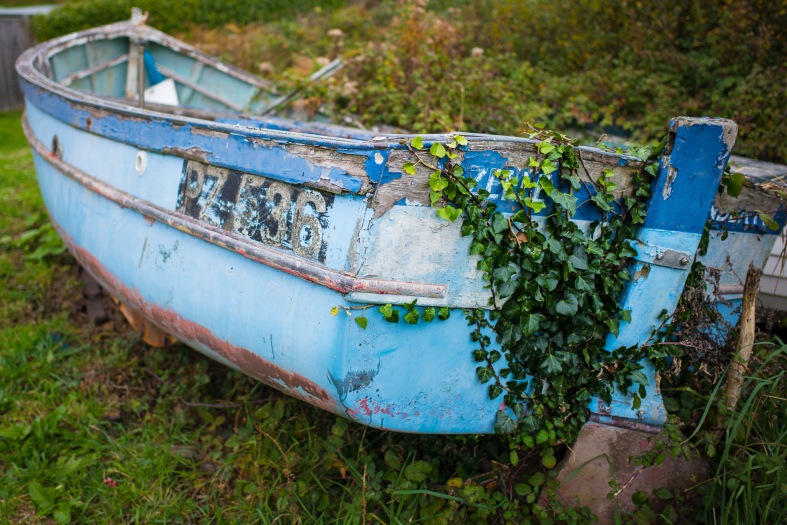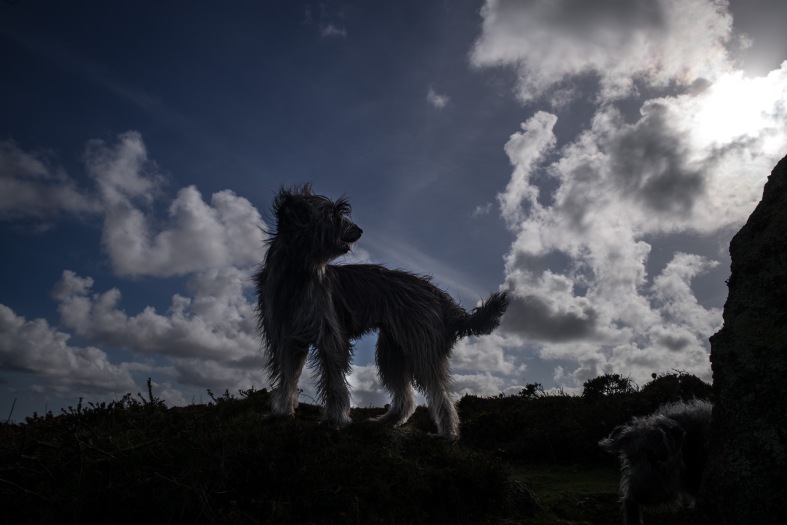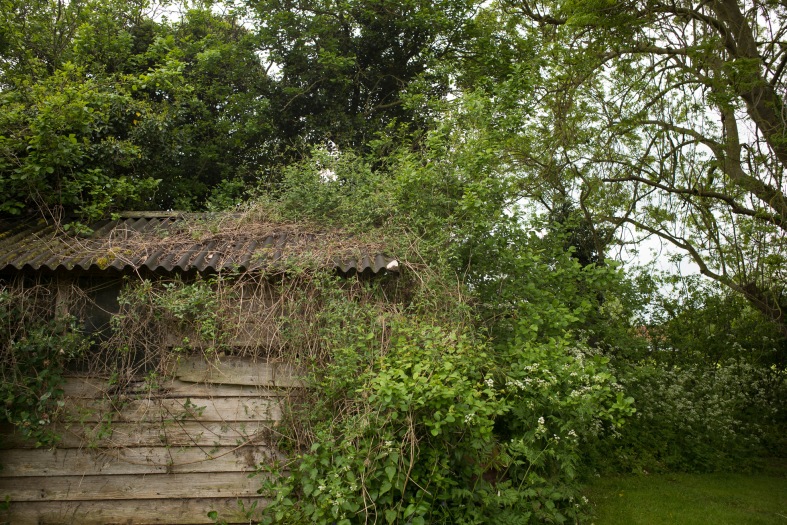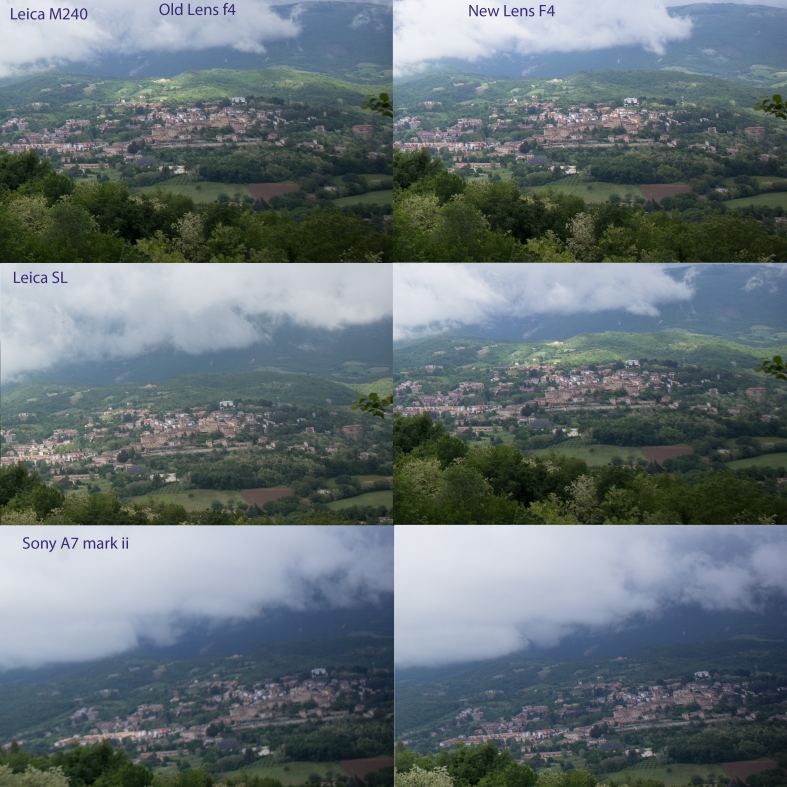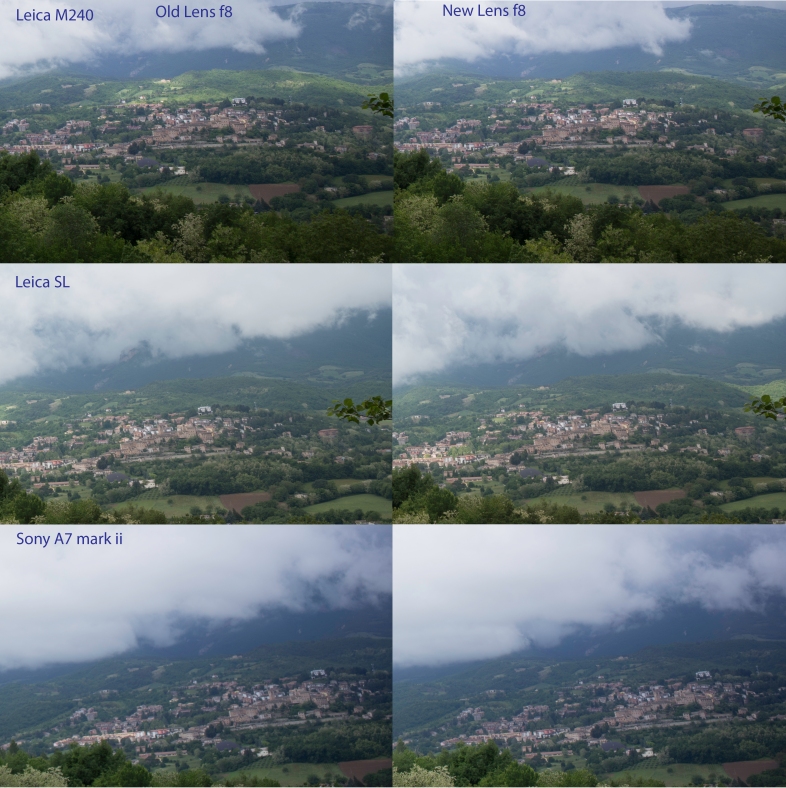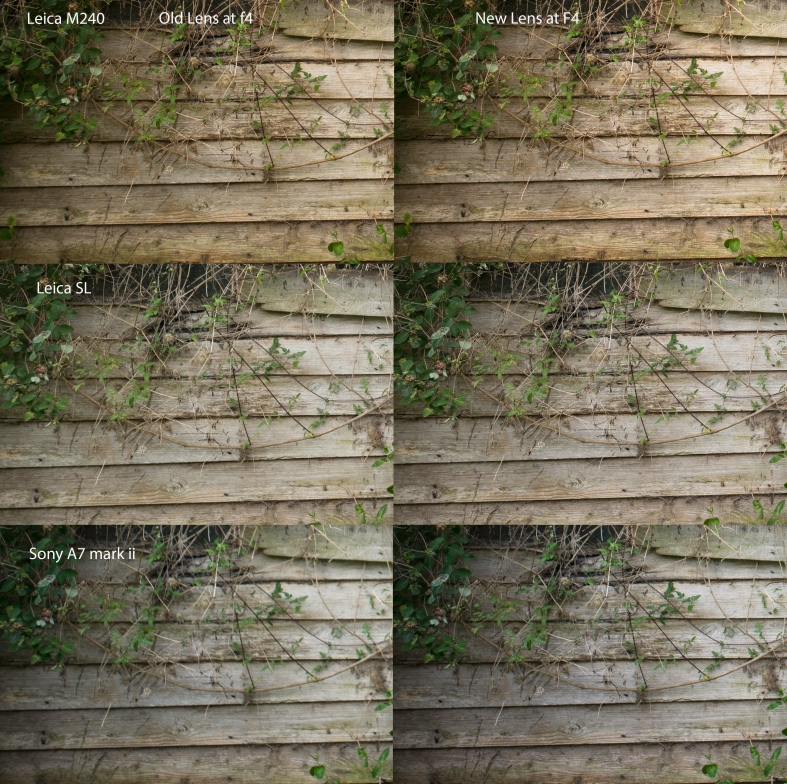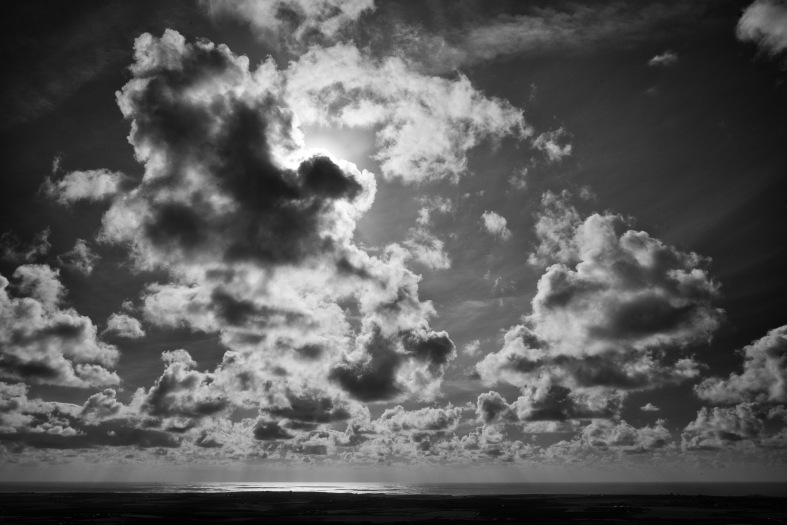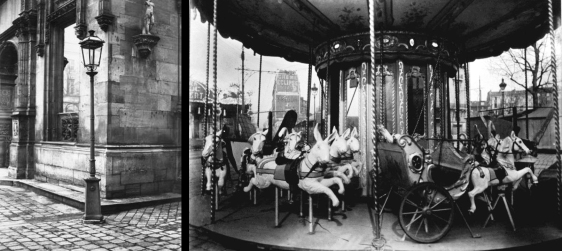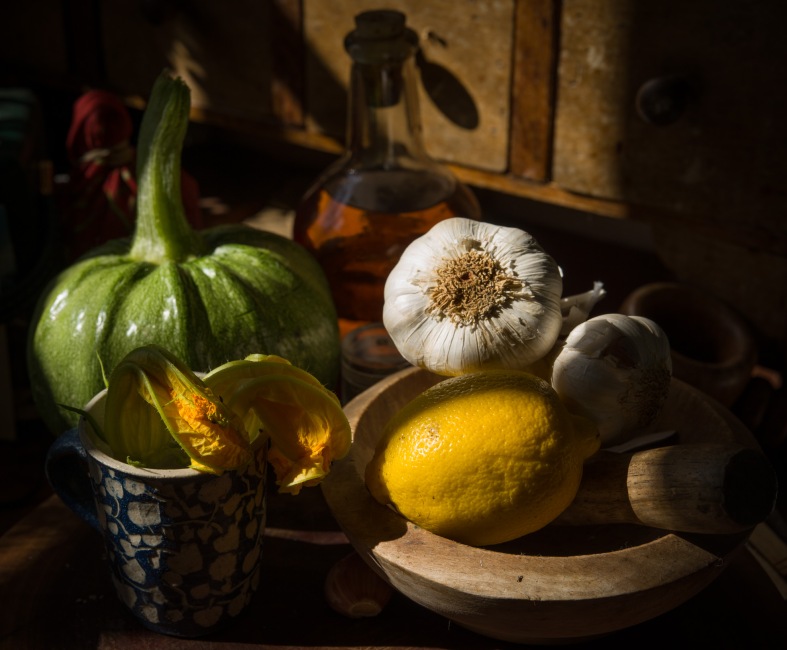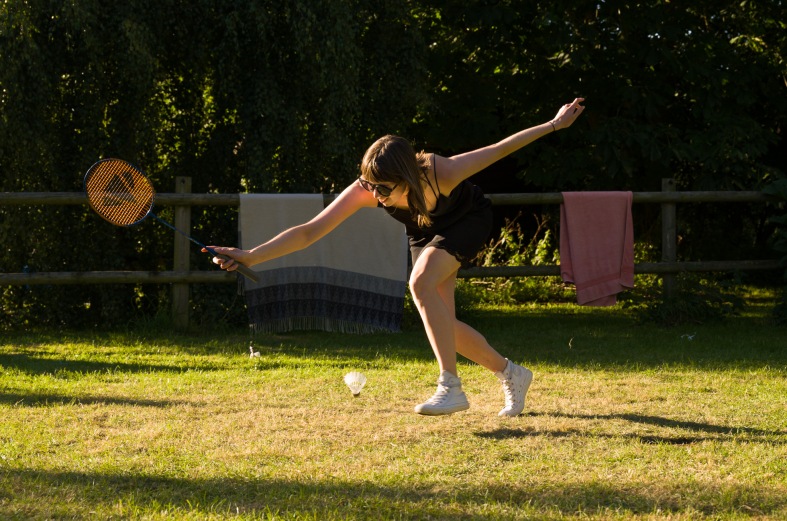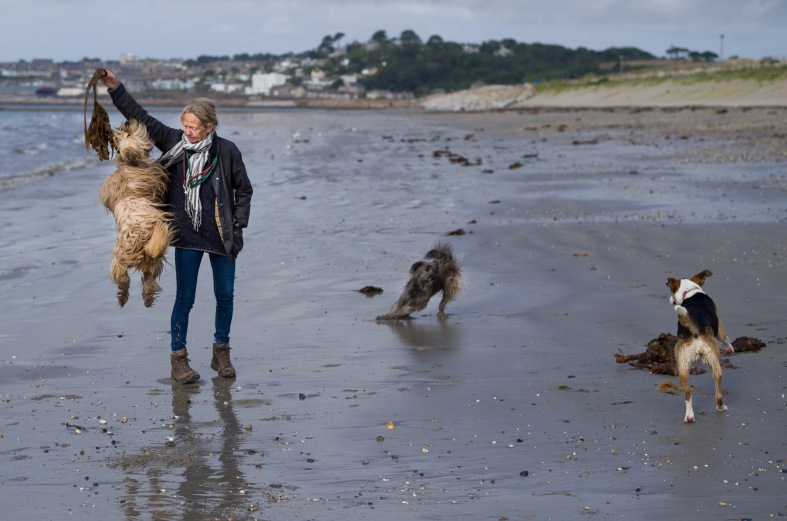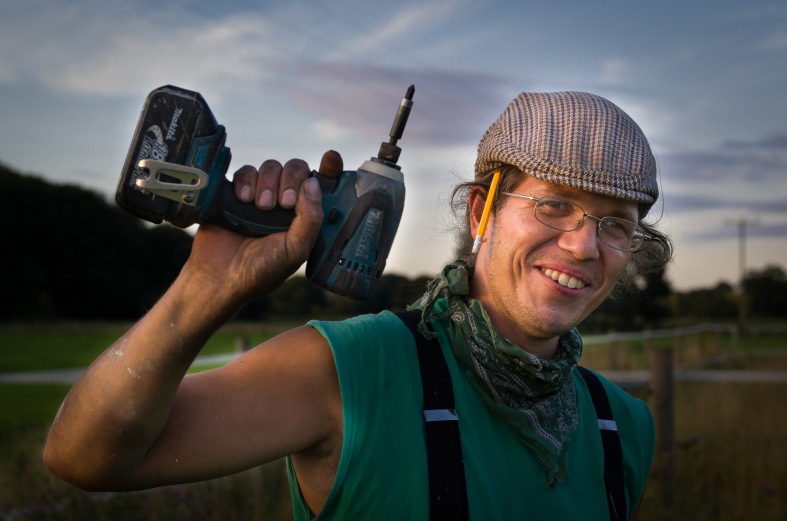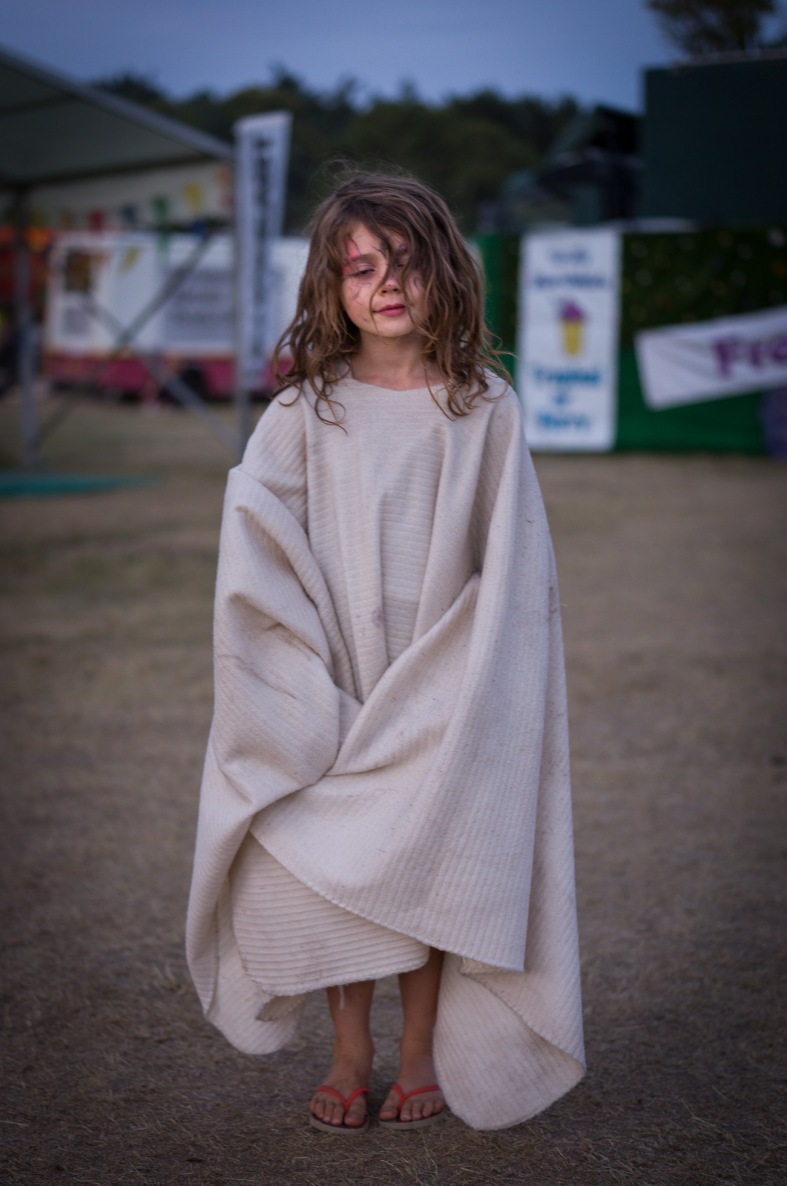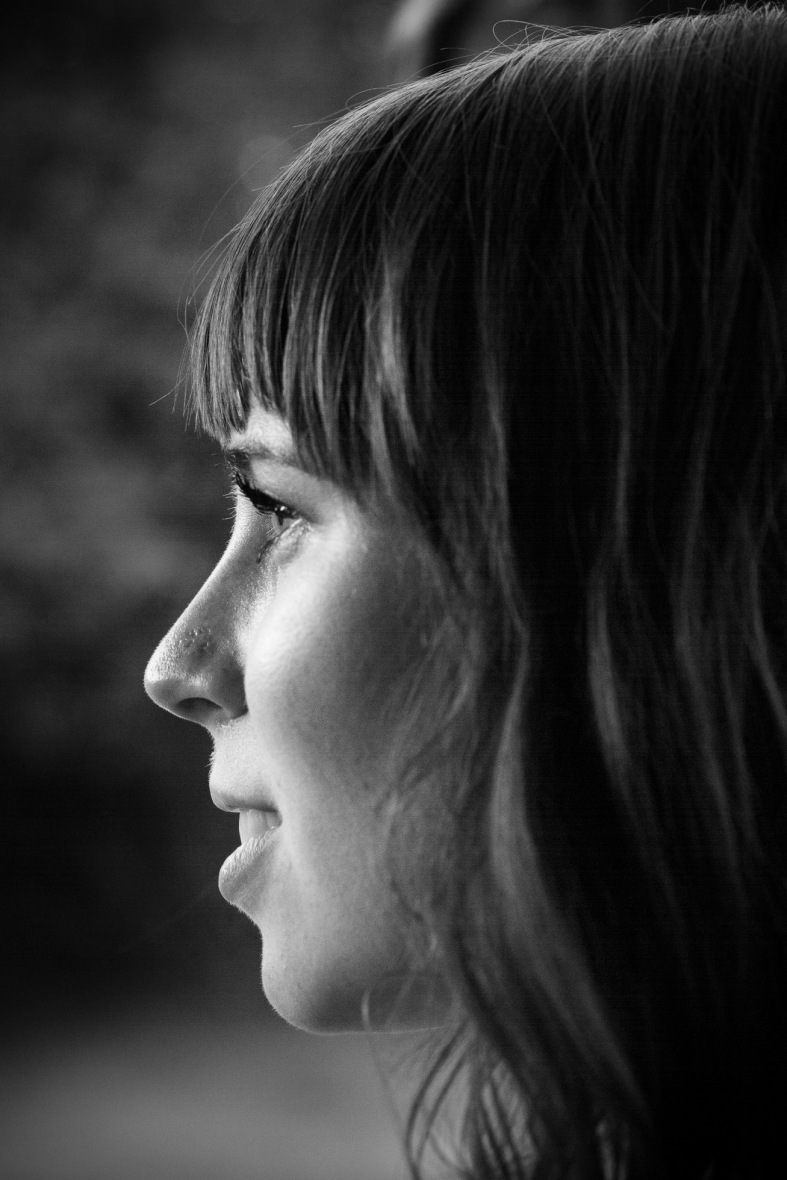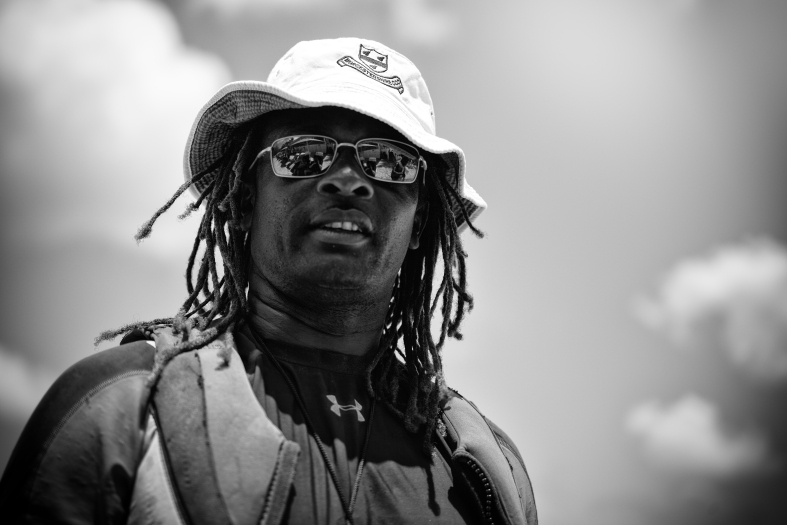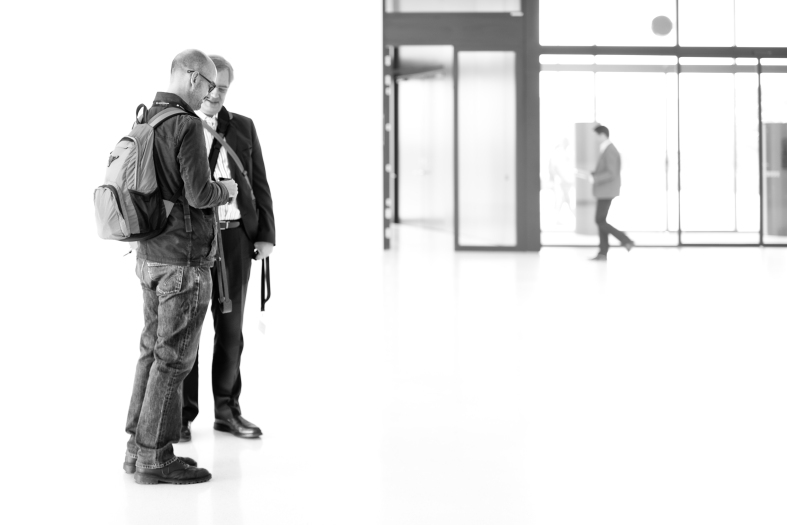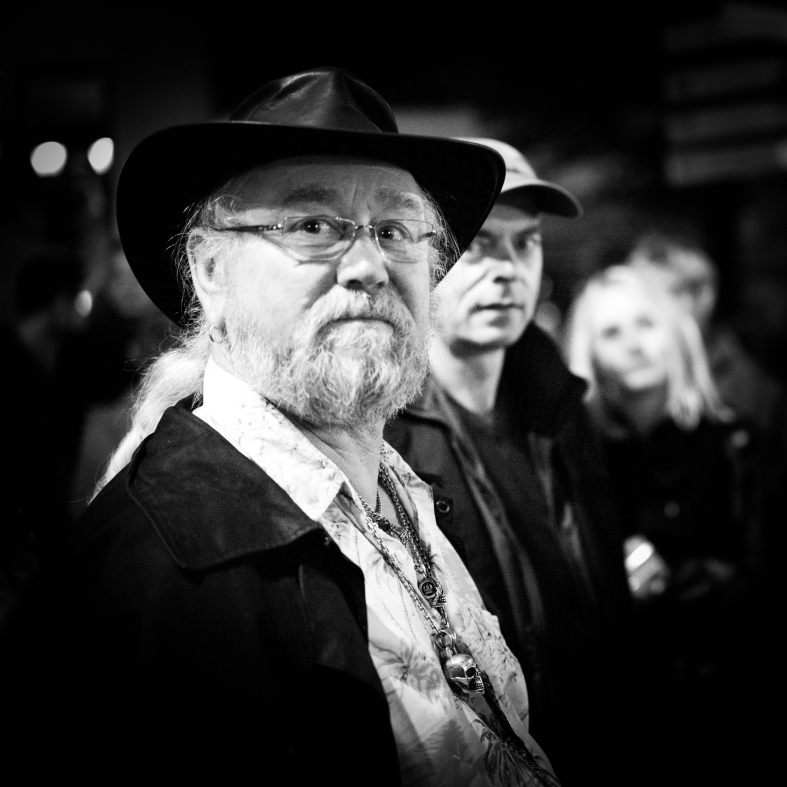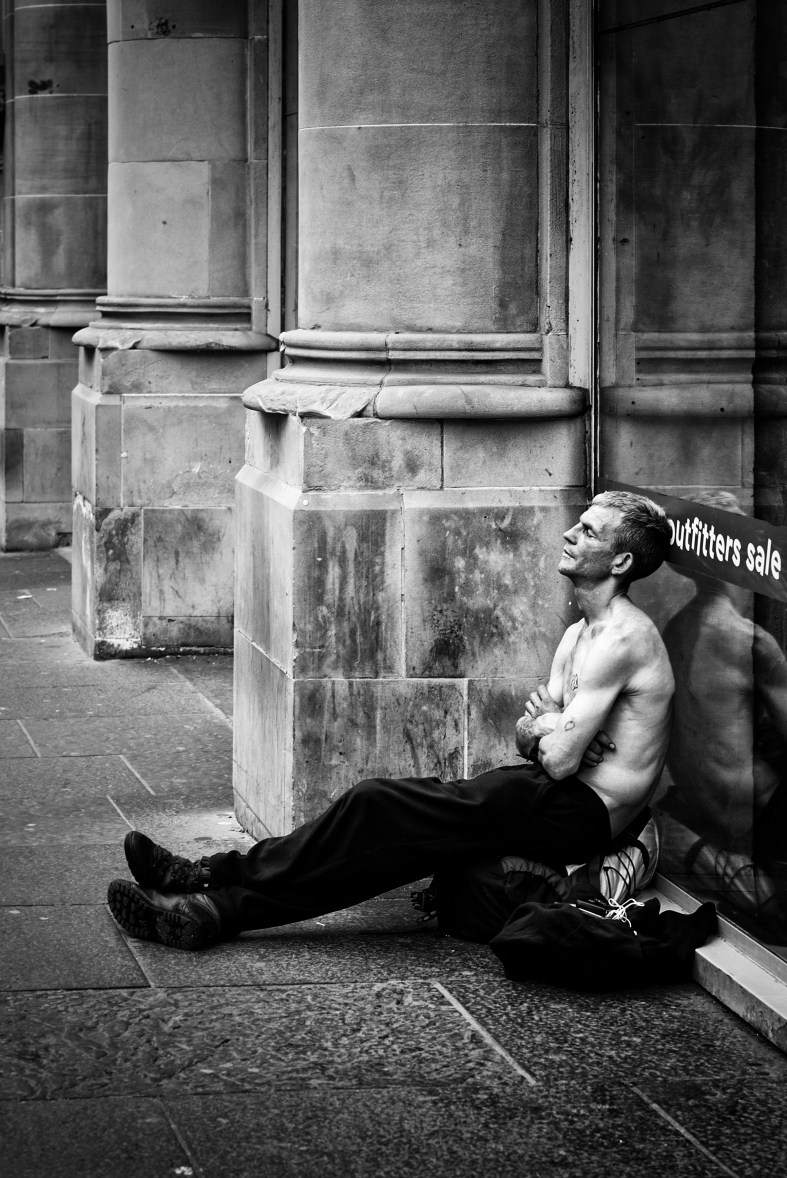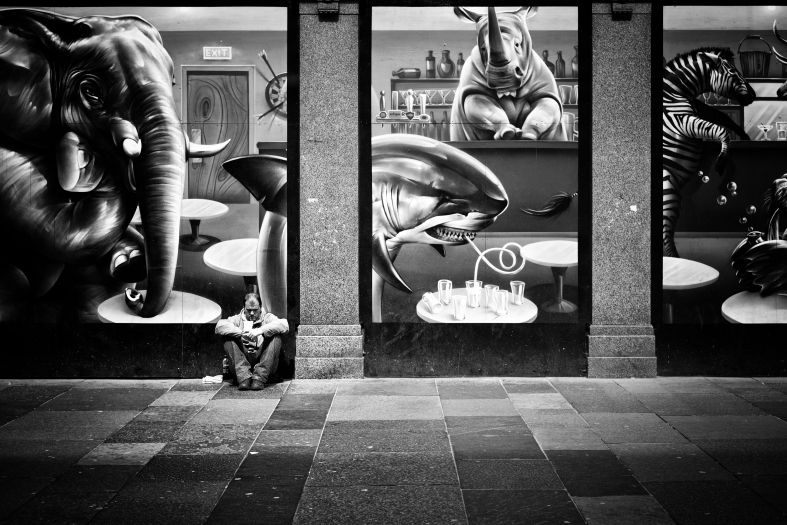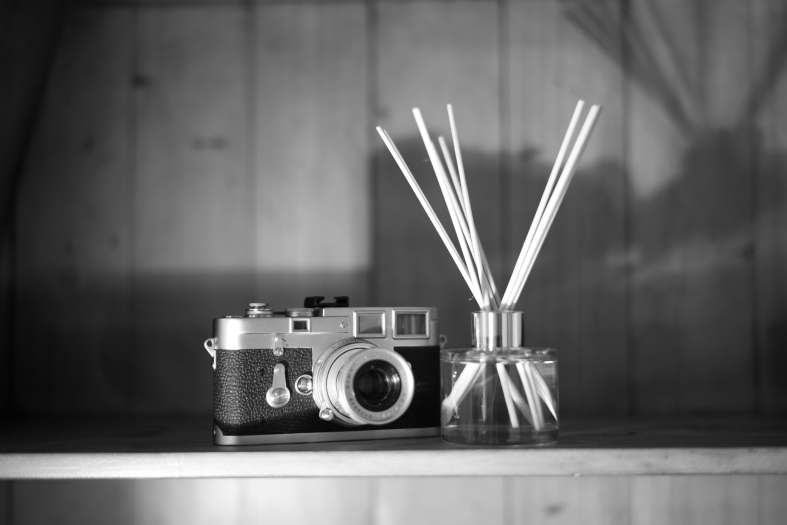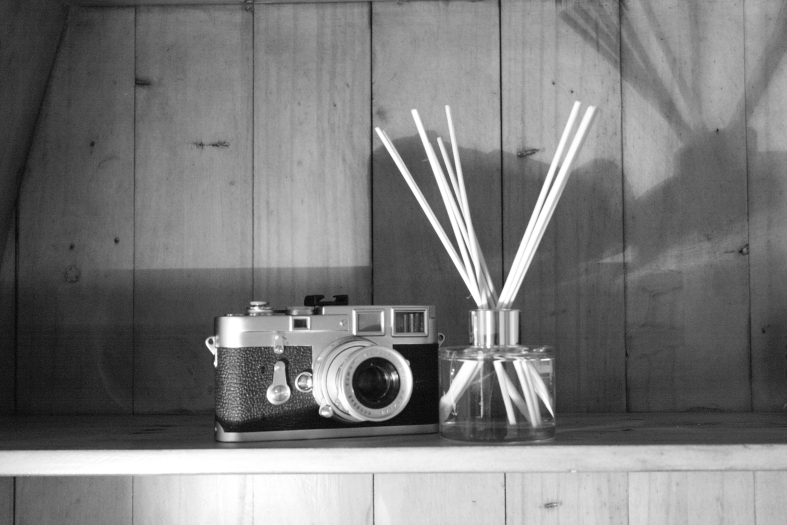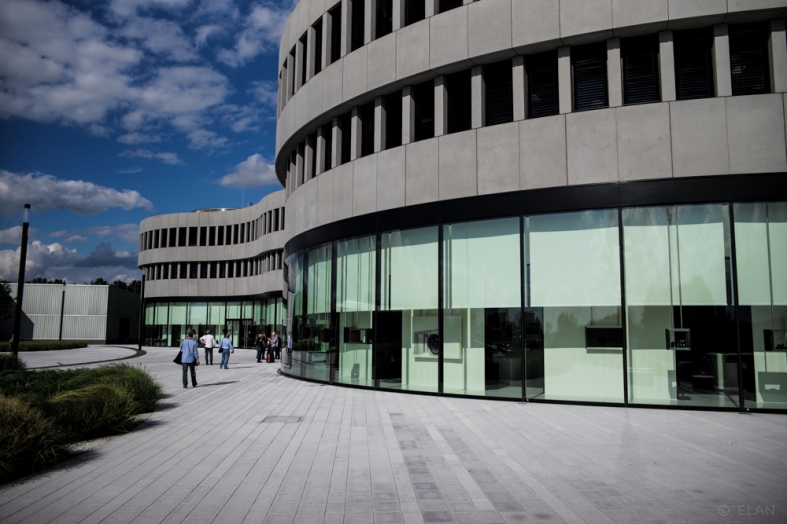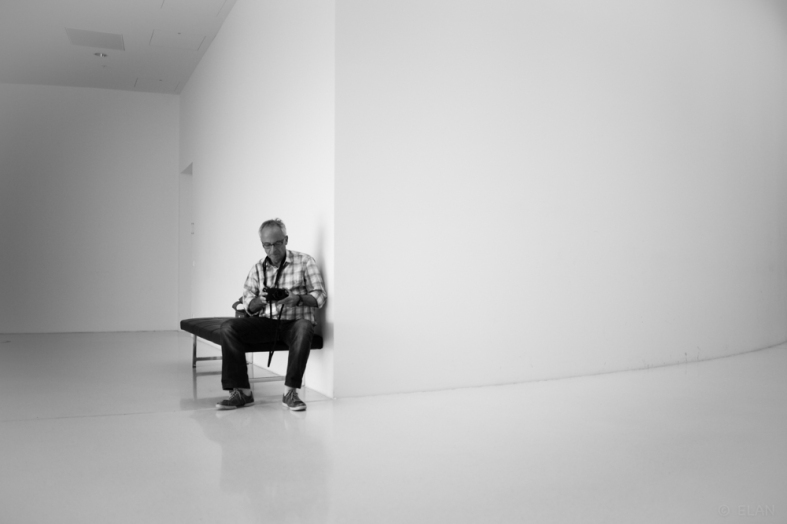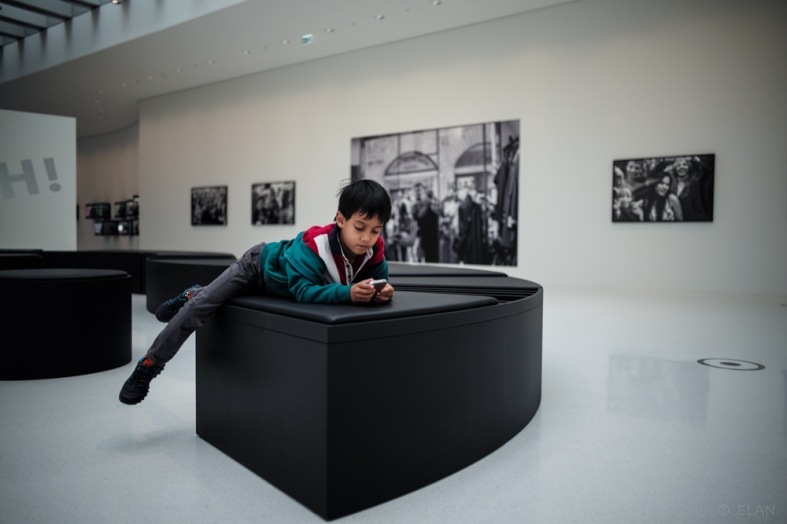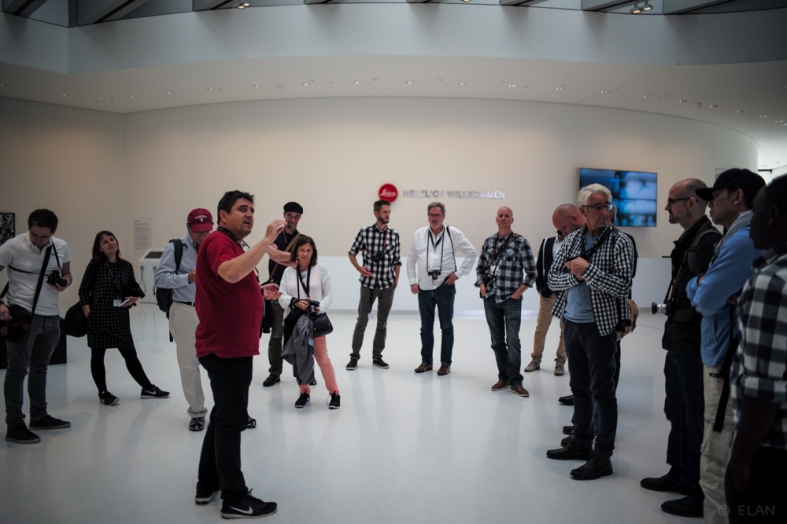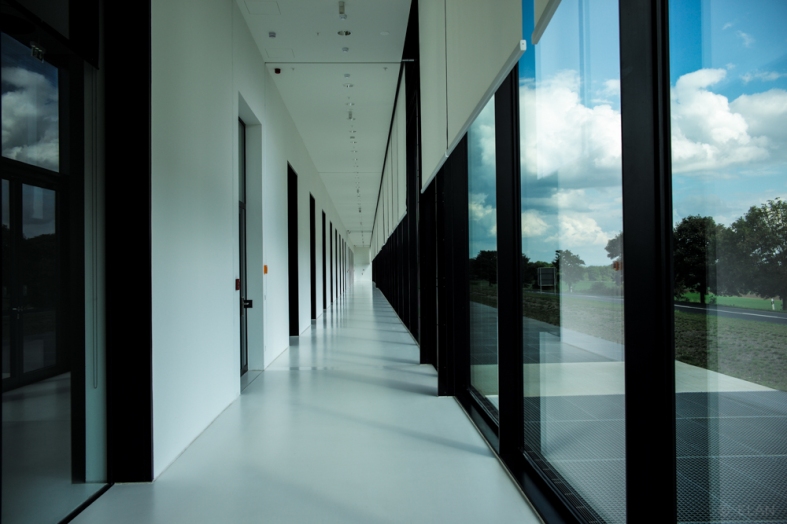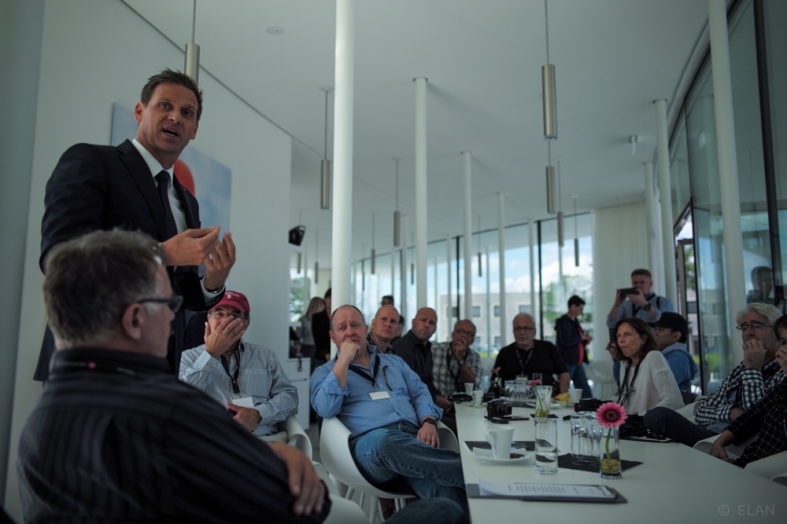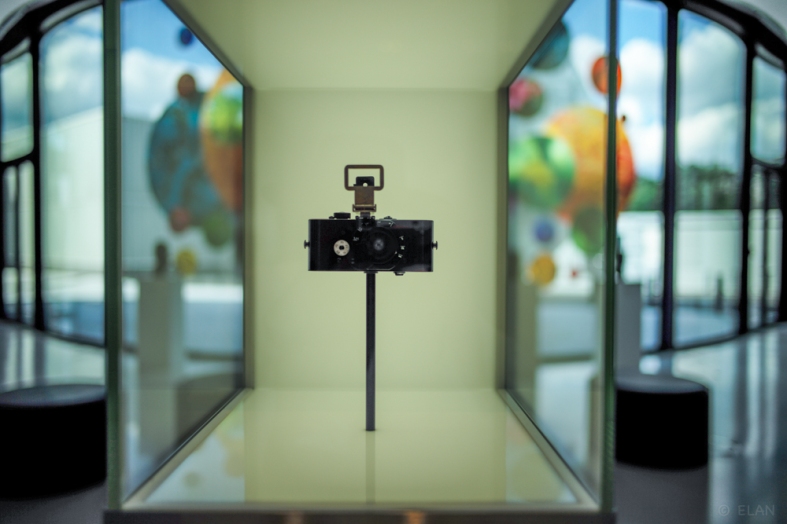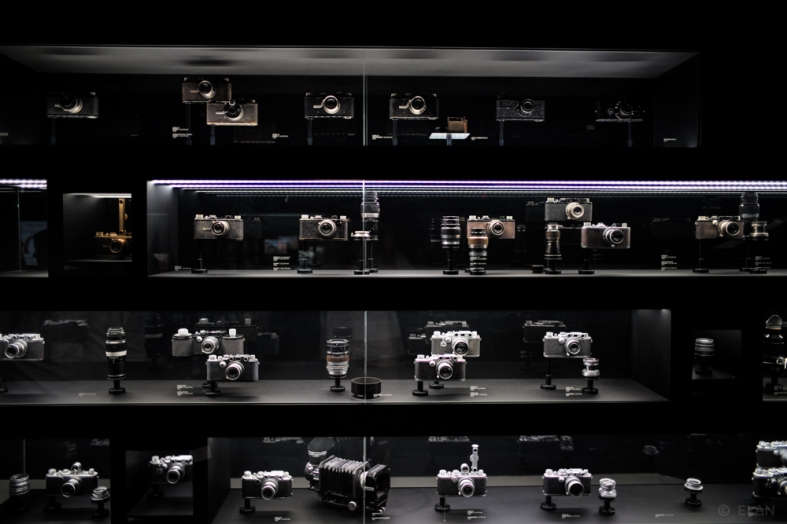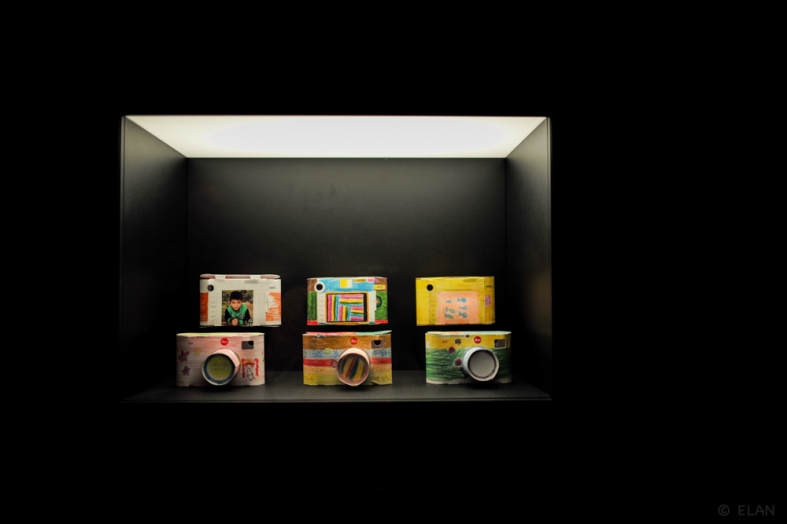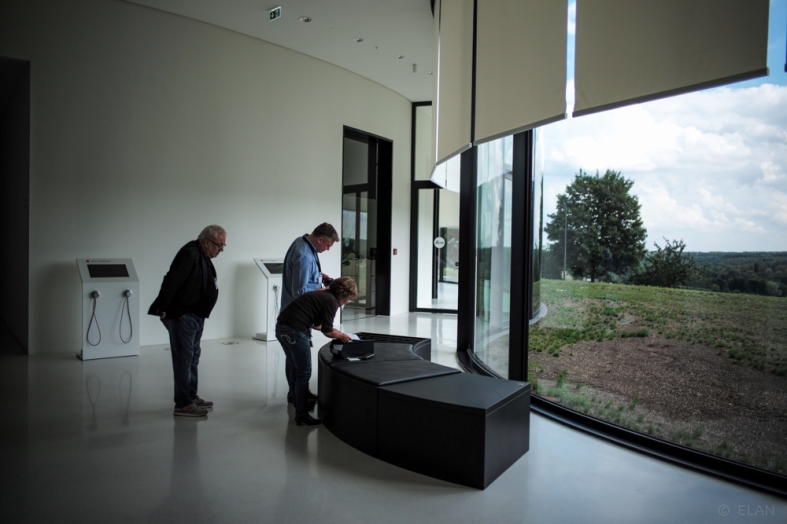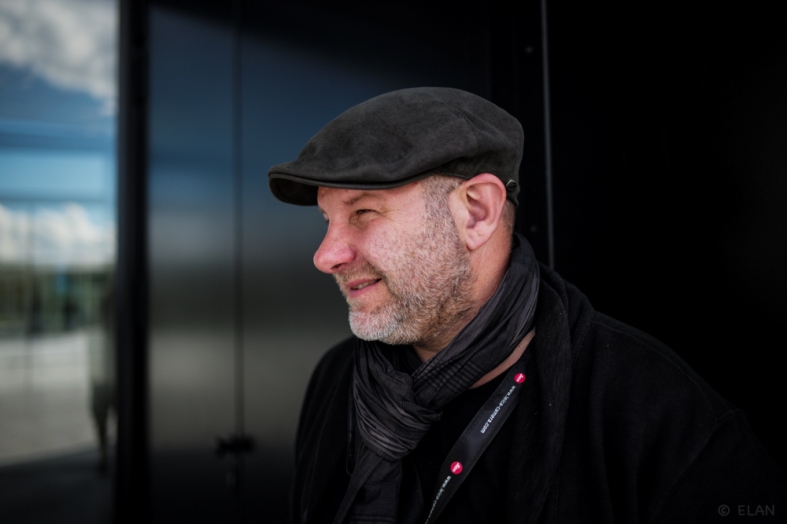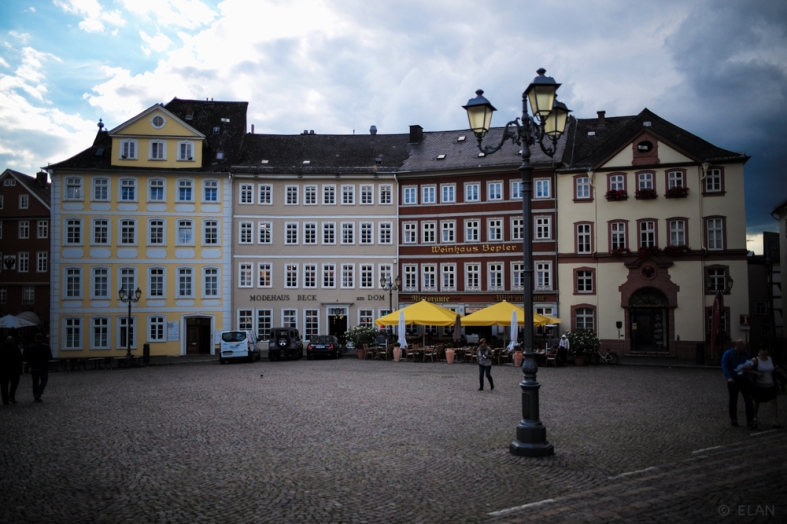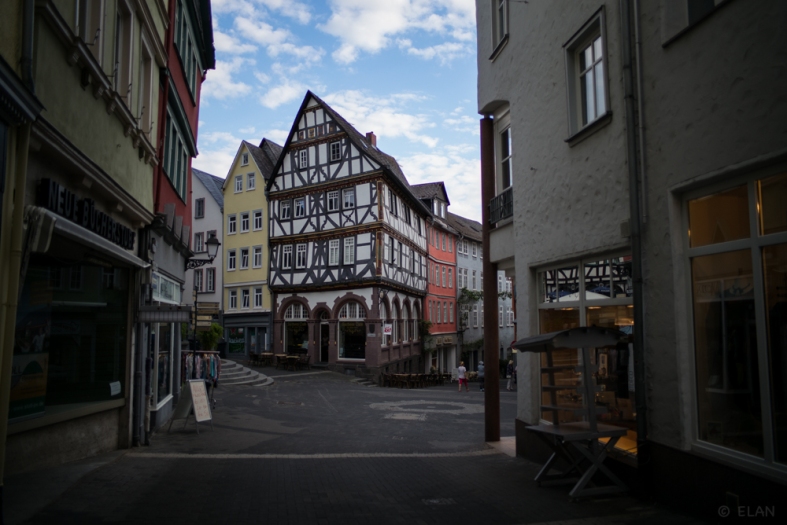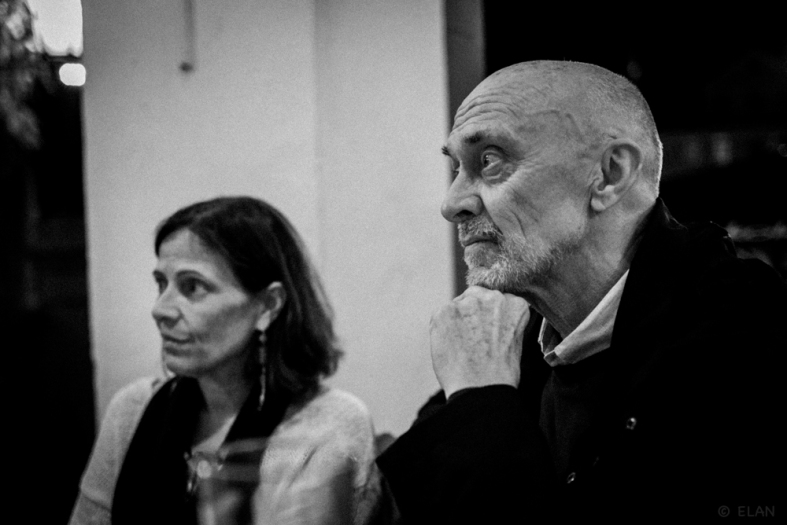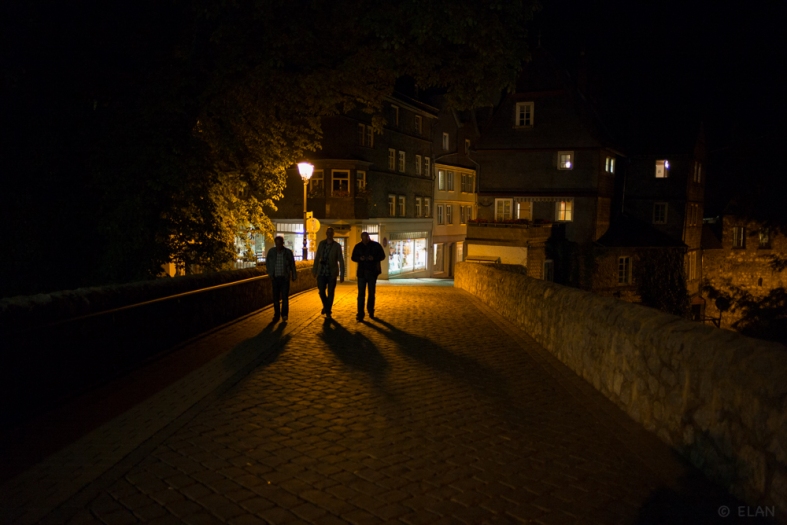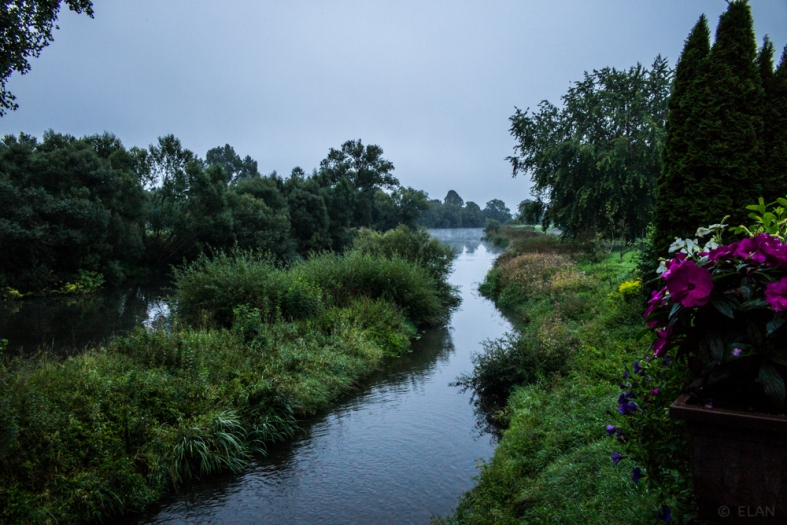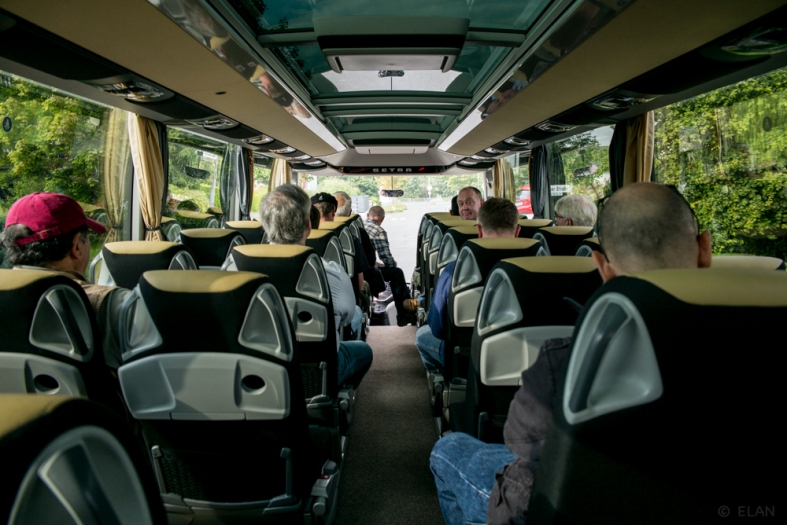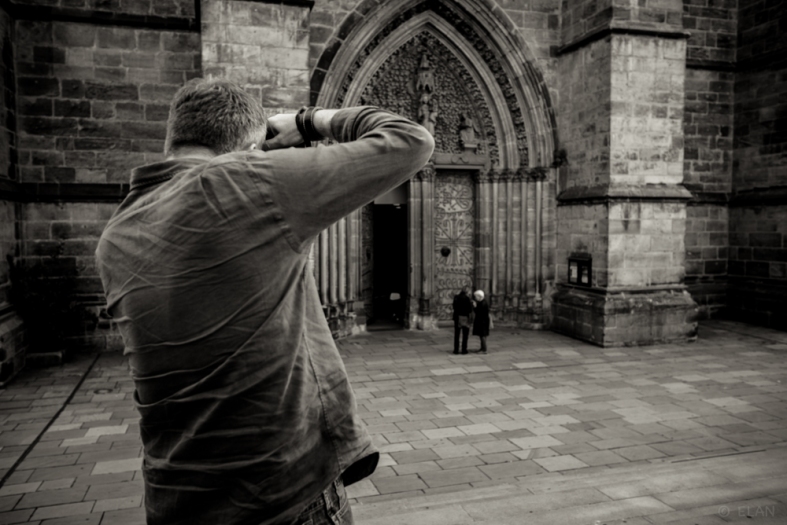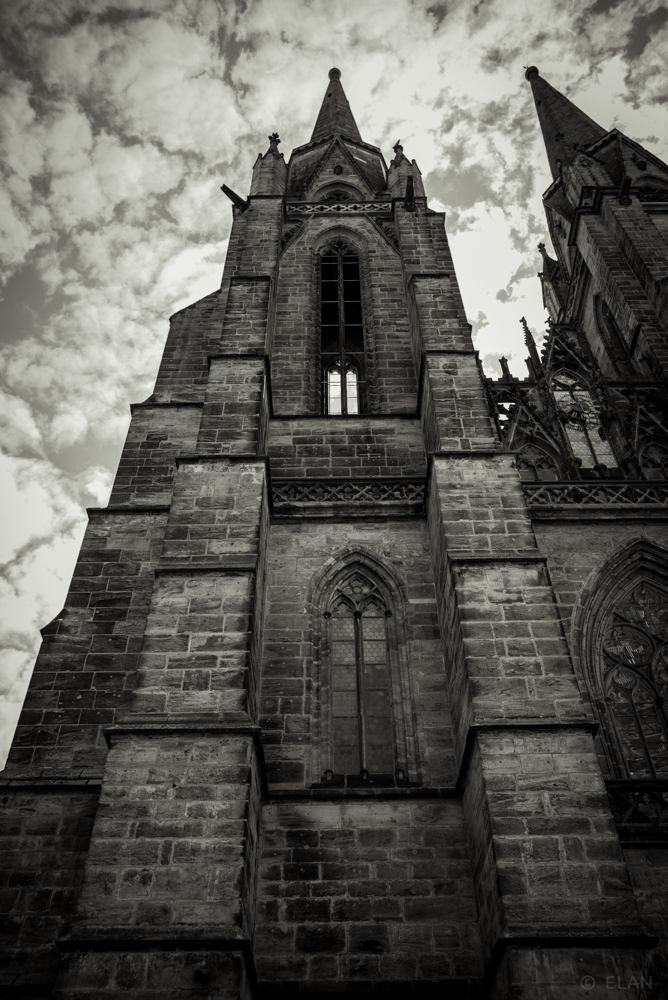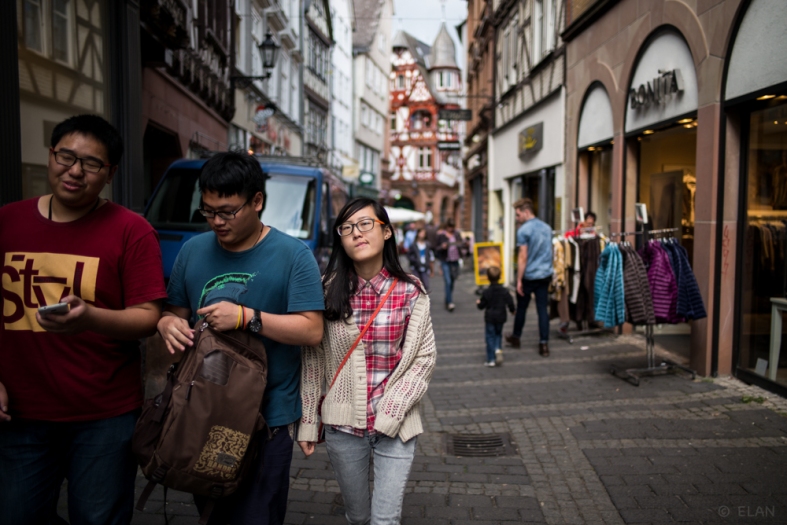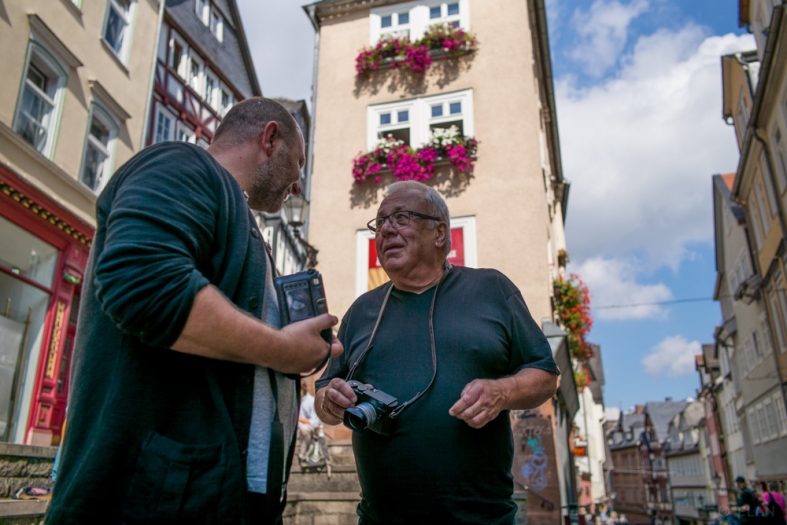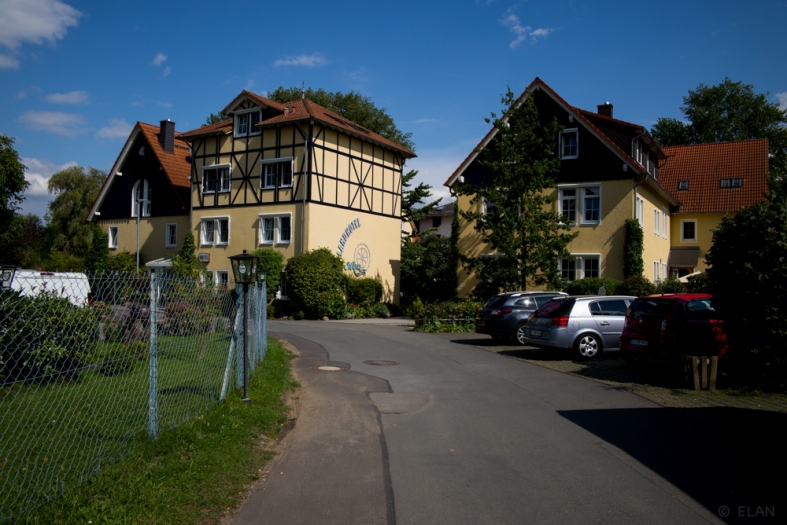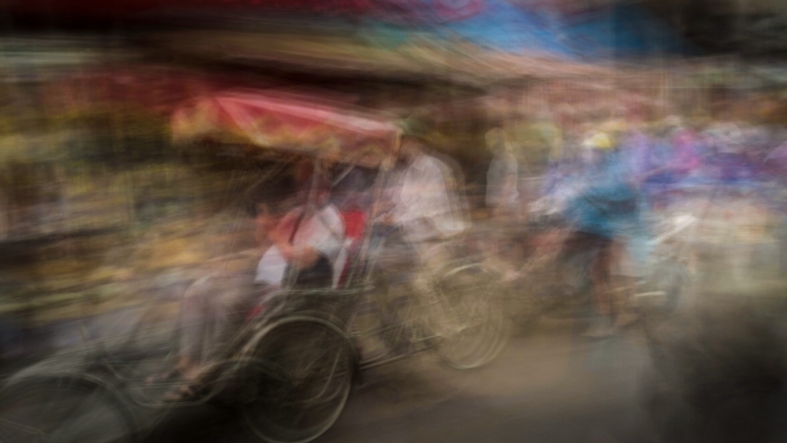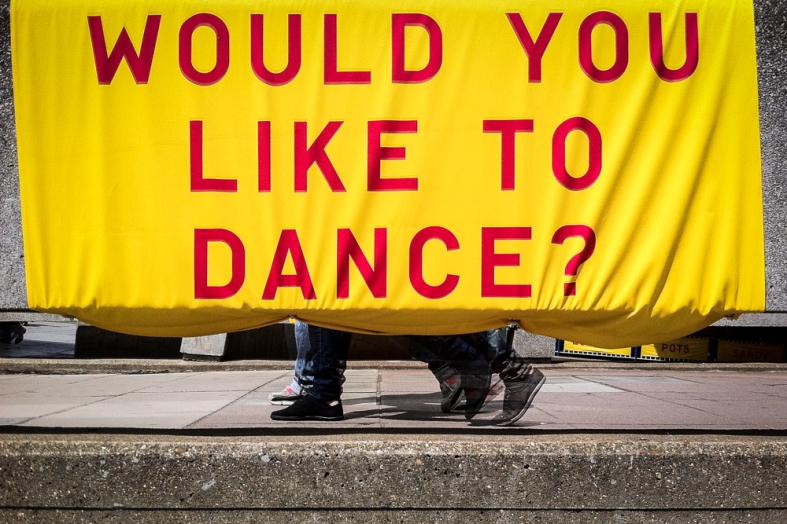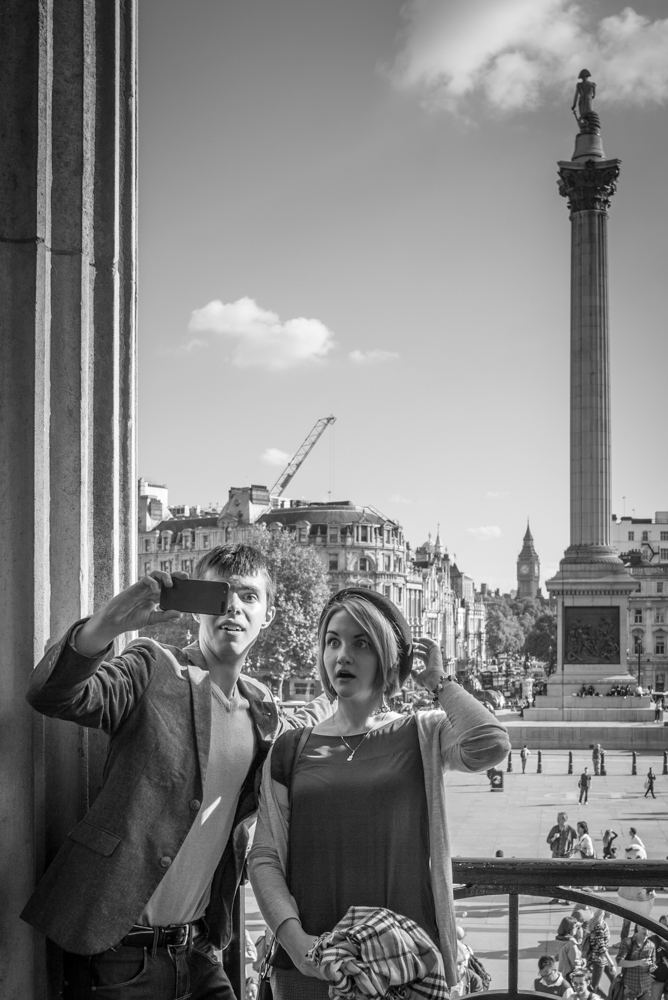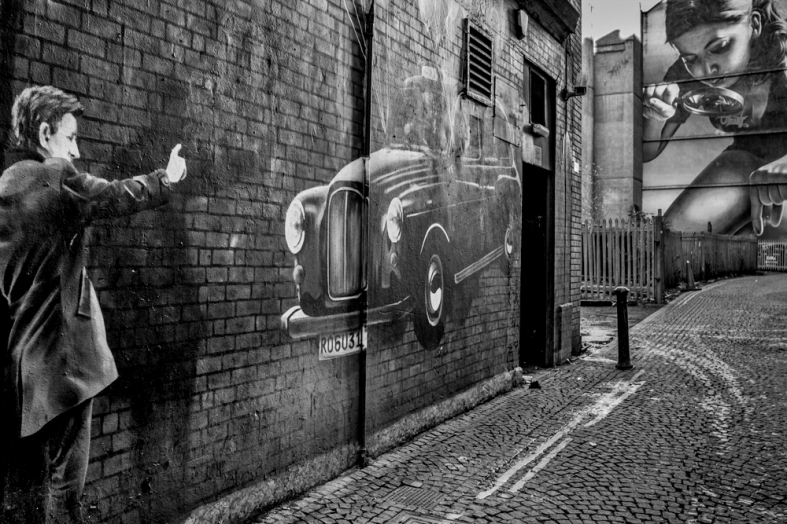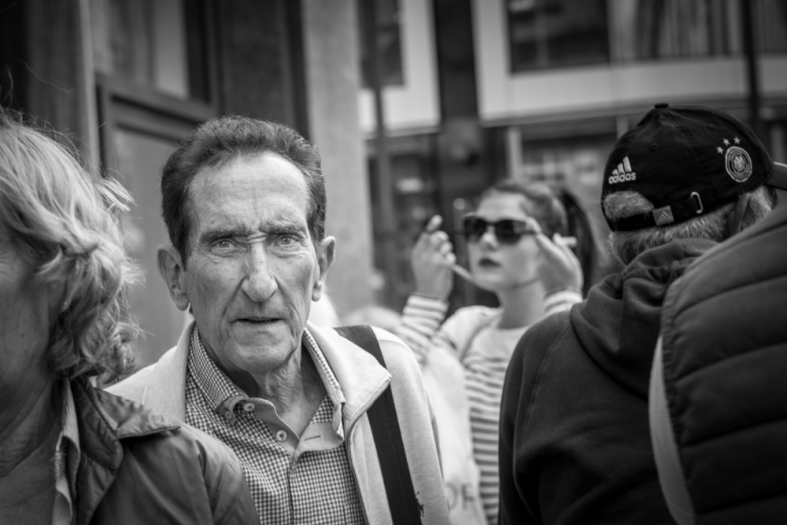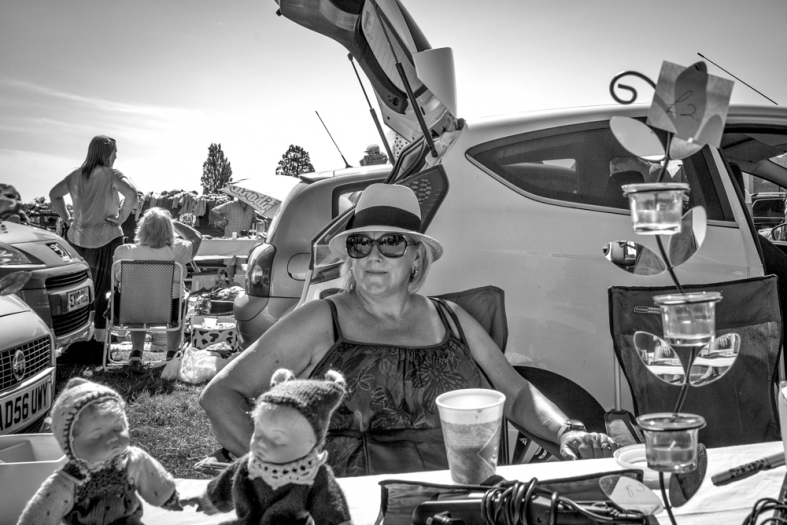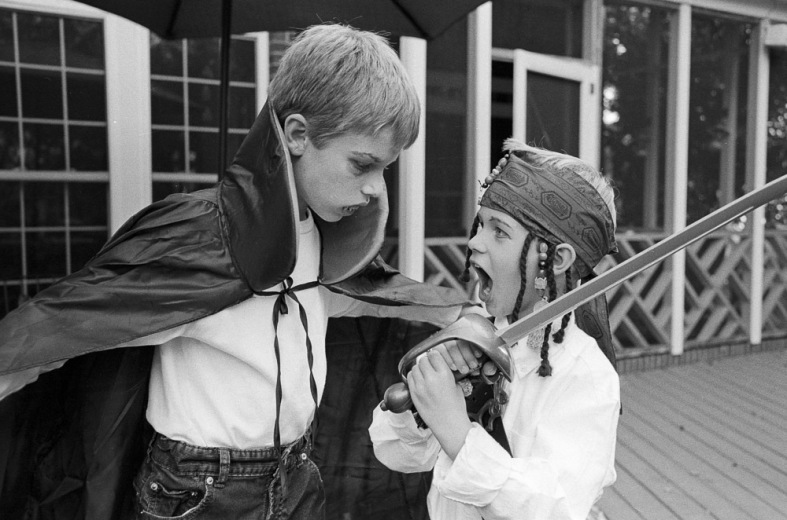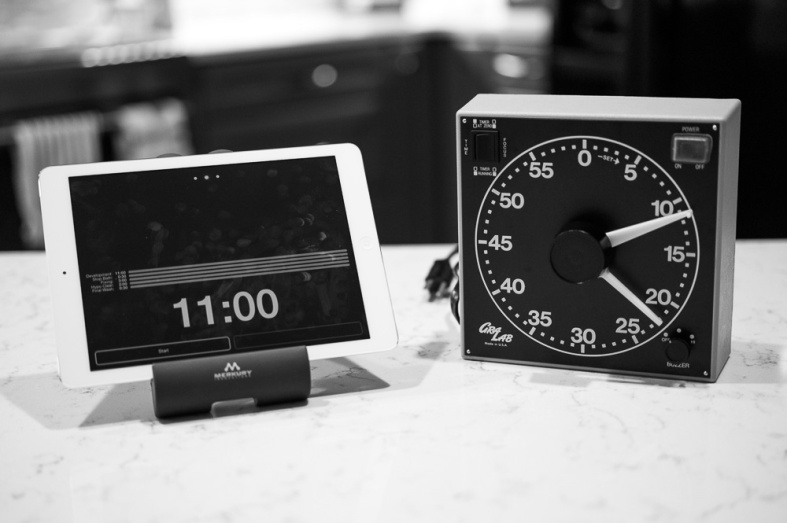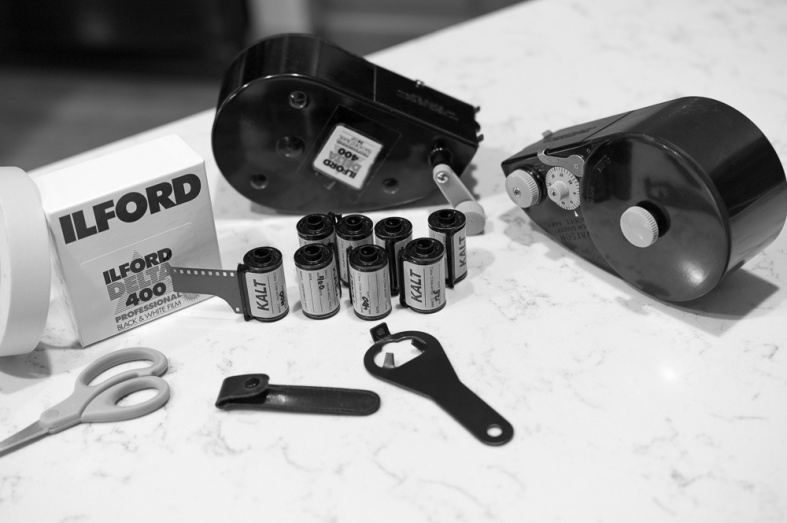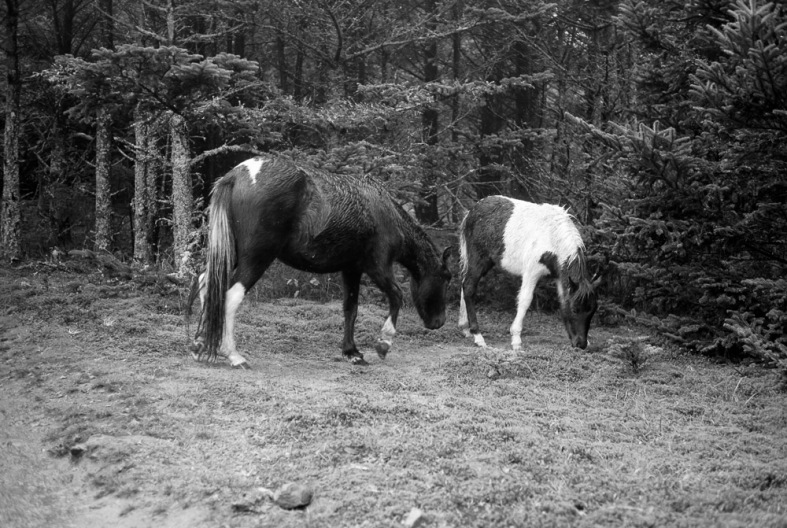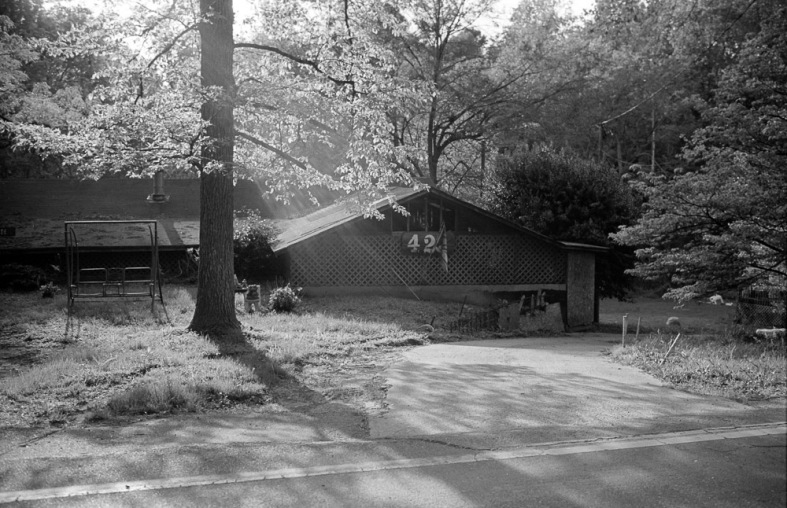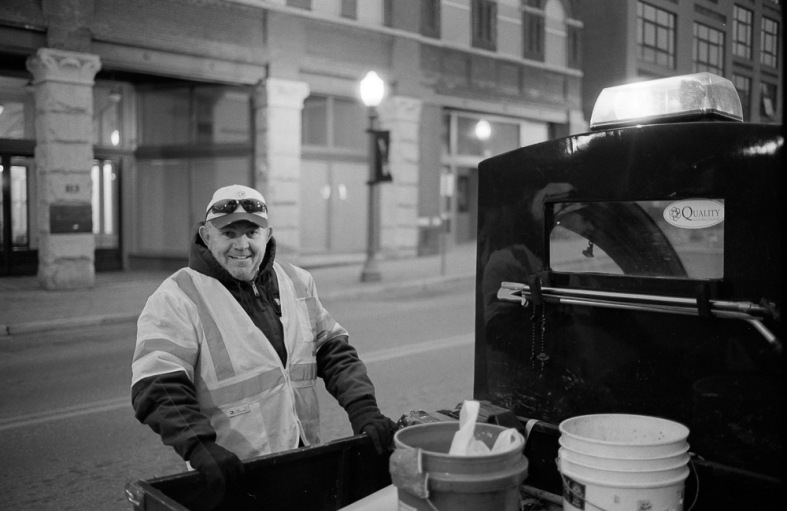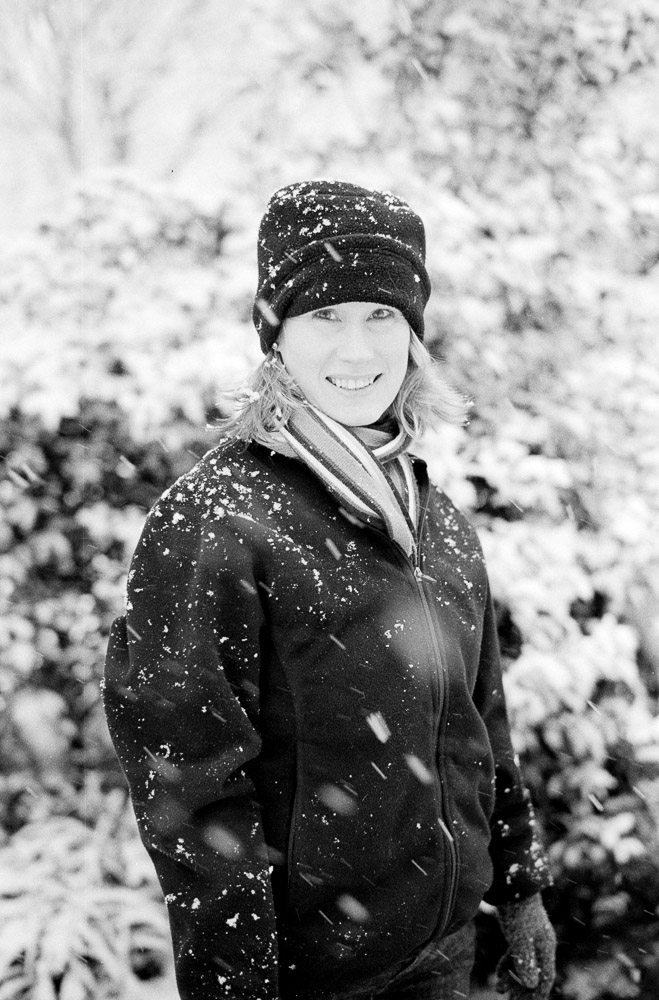The Leicaflex SL and SL2 were manufactured by Leica in Wetzlar from 1968 to 1976, they are reputed to be the best made cameras in the history of photography. Despite being around twice the price of the equivalent Nikon F2 Photomic, Leica nevertheless made a loss on every camera produced.
In 1976 production was stopped, and the next R mount camera was the R3, which was based on the Minolta XE-1/XE-7 camera, this was first built in Wetzlar, and later in Portugal. Leica had been doing research on auto-focus for about 20 years and the project was called Correfot, the first prototypes were based around the Leicaflex SL2, later ones around the R3 and R4 (as an interesting side note, 5 Correfot prototypes were sold in the Westlicht auction on Dec. 5, 2009, Lot # 229 which sold for €50K). However Leica didn’t see a future in AF, and sold the technology to Minolta, who, in 1985 brought out the Minolta Maxxum 7000: the worlds first autofocus camera.
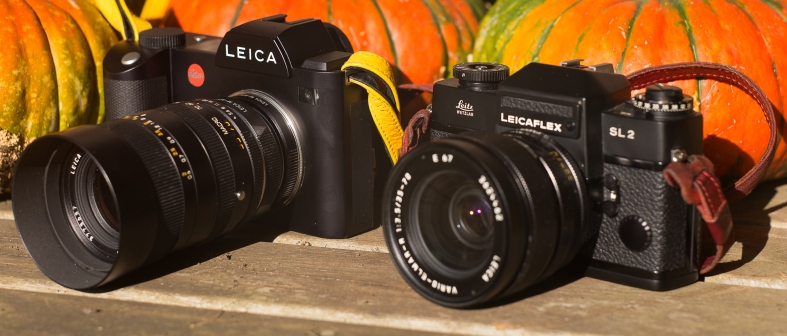 This August Andreas Kaufmann posted a photograph on Facebook of Lenny Kravitz shooting with a Leicaflex SL, I thought this was delightfully oblique, and it prompted me to buy a Leicaflex SL2 secondhand at a very modest price, it’s wonderfully made and just lovely to use, and my 41 year old beauty is still working perfectly.
This August Andreas Kaufmann posted a photograph on Facebook of Lenny Kravitz shooting with a Leicaflex SL, I thought this was delightfully oblique, and it prompted me to buy a Leicaflex SL2 secondhand at a very modest price, it’s wonderfully made and just lovely to use, and my 41 year old beauty is still working perfectly.

Sfakian Sunrise Leica SL with Leica Vario Elmar T 55-135 ISO 50
Of course, the Leica SL might also be construed as Leica S L(ight), and the new camera does indeed take full advantage of the 7 years of in house development and interface design of the Leica S cameras. Added to which, Leica will provide an adapter which provides AF with S lenses.
I’m afraid that I’m as hooked on photographic forums and social media as many photographers. One of the special pleasures for me is to read the rumours about new camera introductions when I already know the truth; sometimes it’s really hard to stop oneself from making comments!
In this case it was particularly tantalising, in that the rumour sites had conflated the idea of a new Leica M with the rumours of a full frame camera with autofocus. Stir in talk of a Leica Q with interchangeable lenses, add a little guesswork (the demise of the Leica T and the re-emergence of a Leica CL) and you can end up with the strangest conclusions. The only thing which I really haven’t seen suggested is what we actually have here; The new Leica SL.
In recent years Sony, Olympus and Panasonic have been the real innovators in camera design, leaving Canon and Nikon to keep refining the single lens reflex camera. Conventional wisdom was that Leica could not compete directly, and needed to focus on niche cameras like the Leica M, where there wasn’t a great deal of direct competition. The Leica Q changed all that, outdoing the Sony RX1 on every level, it’s a stunning camera.
The Leica SL has a similar relationship to the Sony A7 cameras as the Leica Q had to the RX1 cameras; it’s clearly an attempt to produce a camera which is better on every level relevant to the real photographer, whilst maintaining Das Wesentliche – the essence and leaving out unnecessary complications.
Whilst the Leicaflex represented the first appearance of the Leica R mount, it’s worth a small mention of the Leica R10, which was the last appearance of the R mount, and which was abandoned in 2009 because Leica felt they could not compete with Canon and Nikon in terms of autofocus and price. At the time Leica did promise that they would produce some kind of digital R solution, although they didn’t reveal what or when. I think it’s delightfully elliptical that the new Leica SL is certainly that solution.
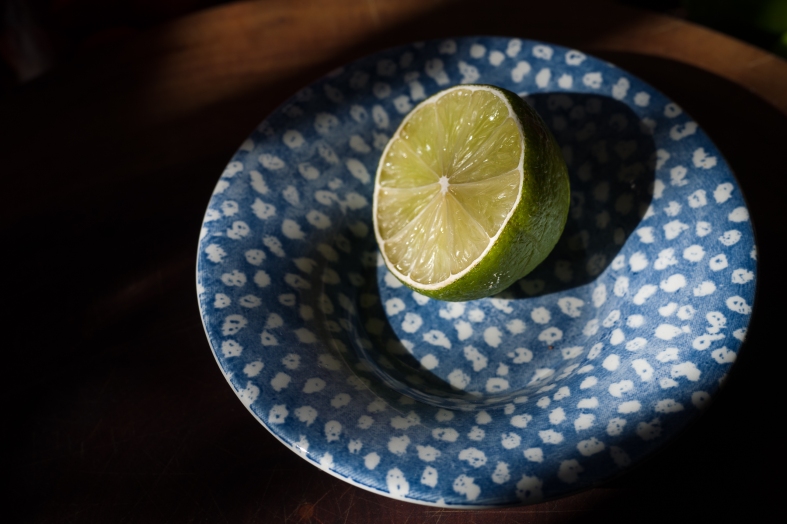
Lemon Leica SL with Macro Elmarit R 60mm ISO 125
The Camera
When Sony released the A7, it was clearly a response to a public desire for a full frame mirrorless camera, and indeed, they have produced a series of great cameras, which have improved incrementally with each new release. They decided on continuity with the E mount, which they had developed for the excellent range of NEX APSc (cropped frame) cameras. However, the E mount is rather narrow for full frame, and there are technical problems with respect to this (especially if you want to use it with Leica M lenses).
When Leica developed the T mount for the Leica T APSc camera, they were very aware that it should also be optimum for full frame cameras, and indeed, the T mount is fractionally larger than the R mount (and noticeably larger than the Sony E mount).
Sony E Mount: 46mm
Leica R mount: 49mm
Leica T mount: 50mm
(nb – these are my measurements)
Although Leica have specialised in small and excellent full frame manual focus lenses over the decades, it isn’t really feasible to produce equally small high quality auto-focus lenses with built in motors (especially zoom and telephoto lenses), and if you can’t produce small lenses, then it’s not really relevant to produce small bodies.
The Leica SL is not a small camera, and clearly it’s not intended to be, but it’s interesting to compare its dimensions with the Leicaflex SL2 (I don’t have an SL!)
Leica SL
width 145mm
depth 36mm
height 103mm
weight 900 gm with batteries
Leicaflex SL2
width 146mm
depth 39mm
height 94mm
weight 818 grm (with batteries)
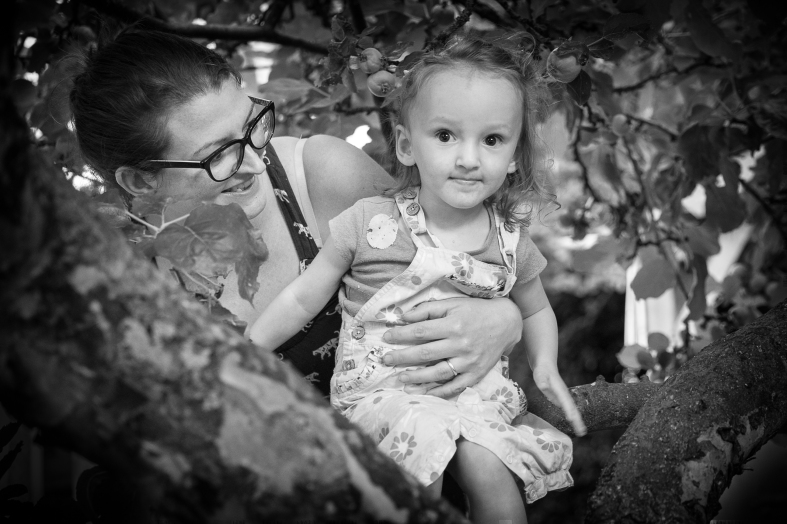
Kate and Scarlett Leica SL with Leica Vario Elmarit f2.8-f4 24-90 ISO 2000
This camera is touching base with history, but first and foremost it is a cutting edge digital camera: It is the first EVF based camera which has really been designed with the requirements of the professional in mind. The design might hark back to the Leicaflex, but it is inherently modern, with design features from the Leica T, S and Q merging into a kind of Bauhaus industrial chic. Like most really good designs it’s surprising at first sight, but quickly insinuates itself into your consciousness.
This article is based on two periods with different prototype cameras, the first was from June 23rd until July 13th, when I had the 24-90 zoom, and a second period with a more advanced prototype from August 27th until October 1st, this time I had no native lenses, so I was shooting with Leica M, R and T lenses.
You should bear in mind that images are taken with early versions of the firmware, and that there are plenty of changes in the production firmware. Having said this, even my prototype camera was remarkably reliable – no hangups and no serious bugs.
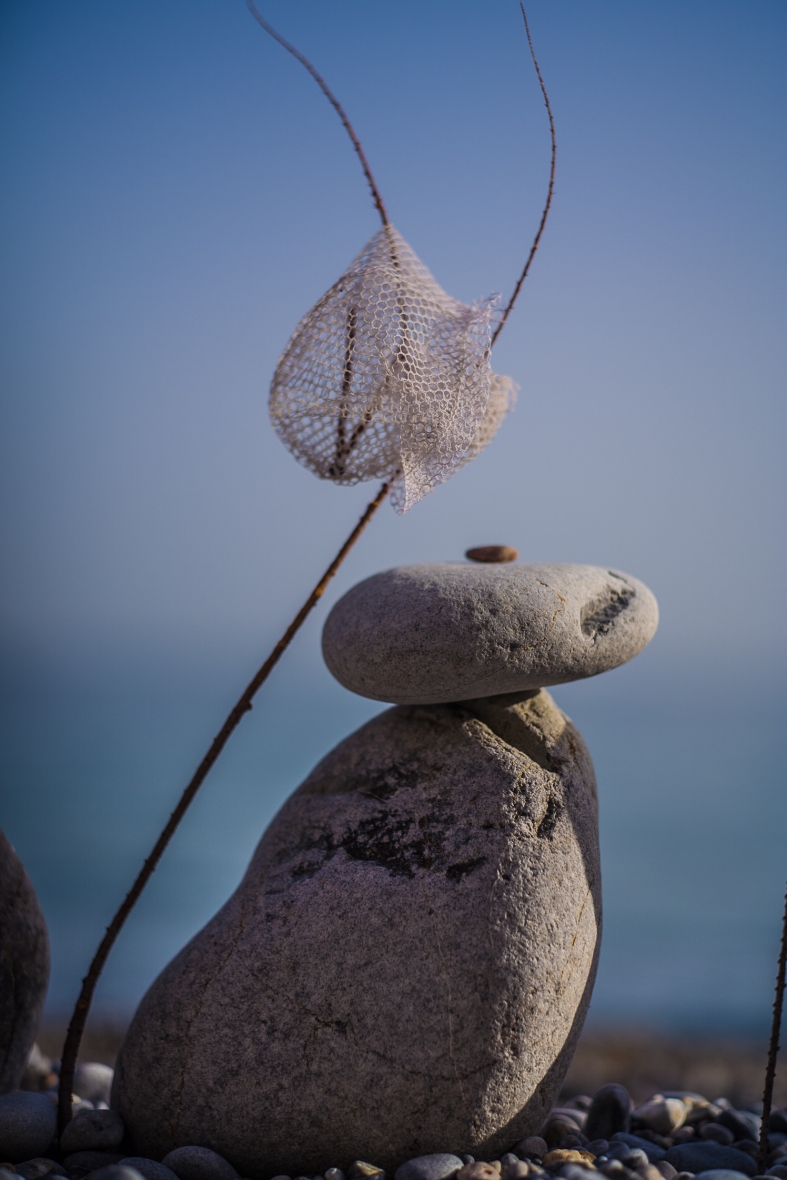
Fisherman Leica SL with Leica APO Summicron M 75mm, ISO 100
Body and Controls
Well, it’s like an S light! It’s been interesting having an S007 in between the two periods with the SL: the whole concept is the same, but there are of course differences, for instance, the SL has a touch screen for replaying images and for touch focus (but not for navigating menus).
The body itself really feels like it’s built out of a single block of metal – in fact, it looks as if there are two pieces (front and back). Without question it’s the best made camera I’ve ever used, The Leica S is very solid (and so is the M) but this is even more convincing. The weather sealing is absolute (I shot nearly 1000 images in a 4 hour event with the 24-90 zoom, in pouring rain with no protection).
I think it’s very funny that there are no words on the top plate or the back of the SL . . . except on the On/Off switch, which is clearly labelled. I suppose it does make sense in that almost everything else is configurable, but it seems odd to assume that the user can manage all the interface without help . . . but might need assistance turning the camera on and off!

Leica SL
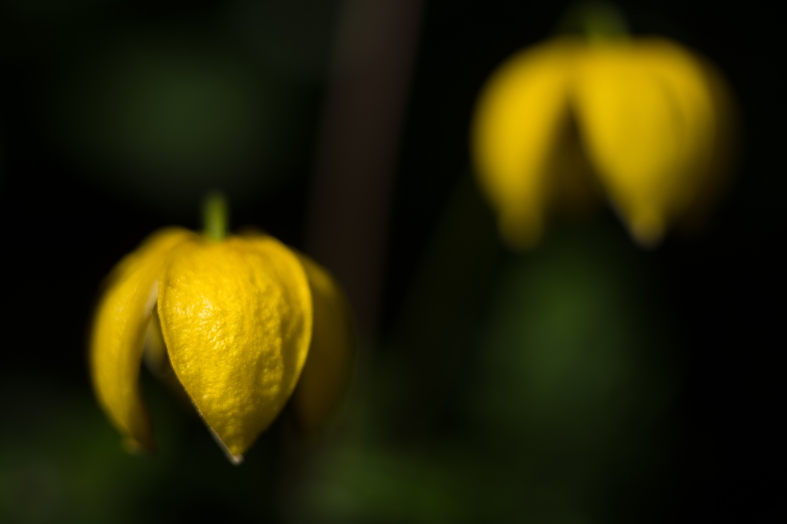
Clematis Leica SL with Leica Macro Elmarit R f2.8 60mm ISO 125
The Back
There is a large high quality LCD with 4 unnamed buttons at each corner.
A short touch of any button will bring up the options relating to it:
Top Left = Menu options
Bottom Left = magnify
top right = play
bottom right = info.
By default, when looking through the EVF, the top left button is disabled (to help avoid nose control). If you like nose control, then you can re-enable it.
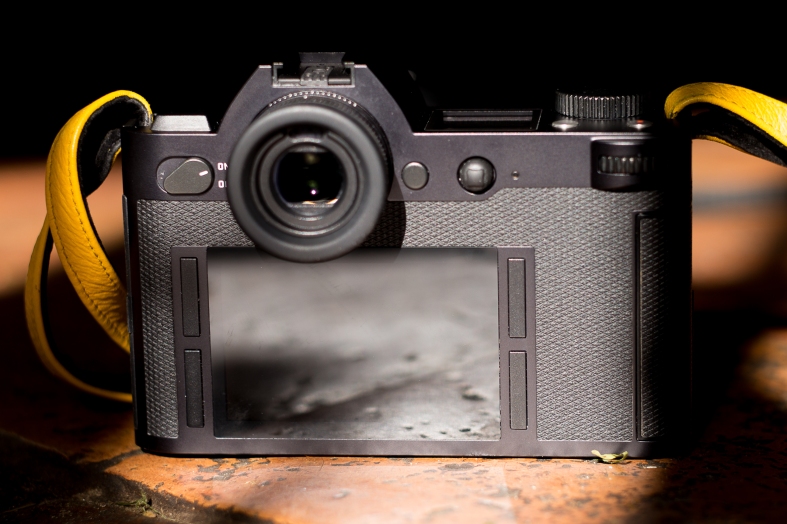 Choosing the top left takes you to the different menu levels, and the buttons change so that:
Choosing the top left takes you to the different menu levels, and the buttons change so that:
Top Left = Camera menu
Bottom Left = Image menu
top Right = favourites menu (you can choose what is in it)
bottom right = Setup menu
A long press of any of the buttons brings up one of the following (you can configure it as you like)
Drive Mode
Focus Mode
AF mode
AF Field Size
Exposure metering
Exposure compensation
Exposure bracketing
Interval Mode
Key Lock
Focus Limit (macro)
ISO
White Balance
Grey Card
Format
Lens Profile
Just next to the Viewfinder is the EVF button – this is eminently sensible and toggles through 3 settings:
EVF only
LCD only
Both (EVF actuated through eye contact)

Love Leica SL with Leica Vario Elmar R, 35-70 F4 ISO 50
To the right is a joy stick which, like the one on Leica S, can be used to scroll through menus (where pressing it acts as confirmation) , or to zoom in to 100% in review mode (a single press) and to move around the magnified image . On The SL it can also be used to move the zoom/focus point around the EVF/LFD for accurate focusing.
The dial on the back plate, like the Leica M, offers thumb support, but also serves to change aperture in aperture priority and manual mode. Press and turn and it’s the mode button to change between Aperture priority, Shutter Priority, Manual and Program mode (just like the Leica S).
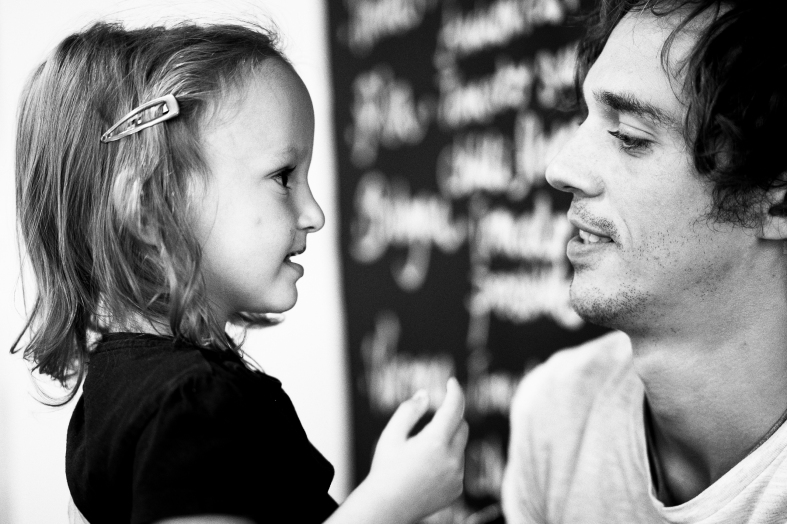
Talking with Uncle Saul Leica SL with Leica Apo Summicron M f2 50mm ISO 1000
The Top Plate
The LCD on the top plate gives all the necessary information, and is readable in the brightest sunlight (indeed, more readable in bright light). There are Two buttons, for Live View and Video (which should be configurable, but aren’t yet). The top dial is for shutter speed, and for zooming in playback mode,
The viewfinder has a diopter adjustment, which is nicely stiff, and has a visible dial, so you can see what’s set and go back there if it get’s disturbed or changed (which didn’t happen to me).
Then there is the shutter release, which is perfectly measured, with a half stop to save the exposure, and full detent for taking the picture. The shutter is lovely – quiet and subtle, it might be the nicest shutter I’ve ever used, and of course, together with the mass of the body it allows hand holding at very slow shutter speeds
On the left hand side is a small bump, which presumably holds the GPS sensor and the WiFi connections. The GPS works really well, but the Wifi apps and connectivity were not finished at the time of writing.
The Front
The only control on the front of the camera is the function button. This defaults as a depth of field preview when using AF lenses, but can also be configured with the same options as the long press on the rear buttons.
The Ports
On the left hand side of the camera is a rubber cover, which opens to reveal ports for Flash, Microphone/headphones/remote, HDMI and USB 3.
On the right hand side is the SD card door – it’s a push and slide mechanism, and is also clearly well sealed against the environment. There are two SD card slots, they can be configured to mirror each other, or not, in which case you can choose which card the camera shoots on.
This is a great feature, much requested by professional shooters where losing shots on the basis of a faulty SD card is too much of a risk.
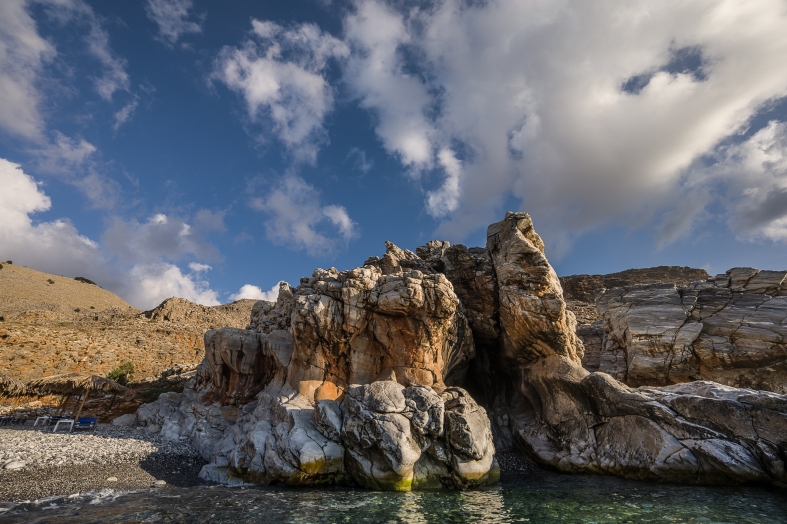
Marmara Beach, early morning Leica SL with Leica Tri Elmar M f4 16-18-21 at 18mm ISO 1000
The Base Plate
This is covered with a thick layer of rubber, however, it doesn’t quite reach the edges. There is a tripod mount in line with the centre of the lens. Like the Leica T the battery becomes part of the base plate and there is a lever for ejecting it. Depending on how you use the camera; battery life is excellent; I’ve managed to get over 700 images on a single charge using the 24-90 zoom. the charger is a reasonable size, and like the M charger it has a normal figure of eight port, so that you can use any old cable or an apple connector of your choice to link it to the power supply wherever you are. I’m really fed up with that box of different proprietary connectors for different zones!
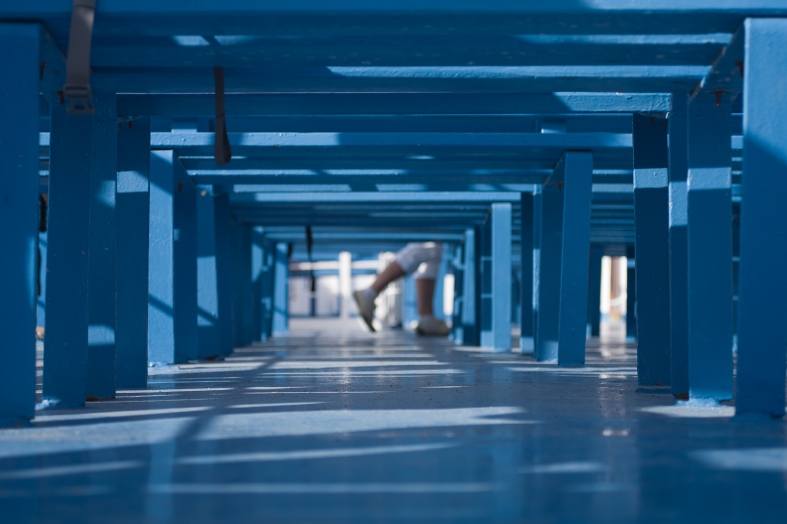
Escape on the Daskiologiannis Leica SL with Leica Vario Elmar R f4 35-70 ISO 50
The Fundamentals
Autofocus
The Leica Q was a hint of what was to come. Leica have really made a quantum leap forward and the AF is extremely quick; right up there with the best of the mirrorless cameras, The SL has Single shot, Continuous (fast and slow), and Interval modes, and you can choose between a selectable focus point (here the joystick really comes into its own) Face Detect / Closest focus distance and Focus Tracking together with Touch Focus. The options are simple and comprehensive.
I still don’t think that tracking focus on mirrorless cameras has caught up with the phase detect systems on the professional dSLR systems, sadly the SL is not an exception to this rule. On the other hand the point focusing is incredibly fast, and together with the combination of a joystick and multiple focus points I got excellent and predictable results.
You can configure the camera to focus on pressing the joy stick when in MF mode; with a half press of the shutter holding the exposure. If you have the AF on the shutter release then if you half press the shutter you can refine the focus manually with the focus ring on the lens.
Taken all in all, the AF system is easy to configure, easy to understand and works pretty well, the only downside being that the Tracking focus still isn’t as reliable as the best dSLR cameras.
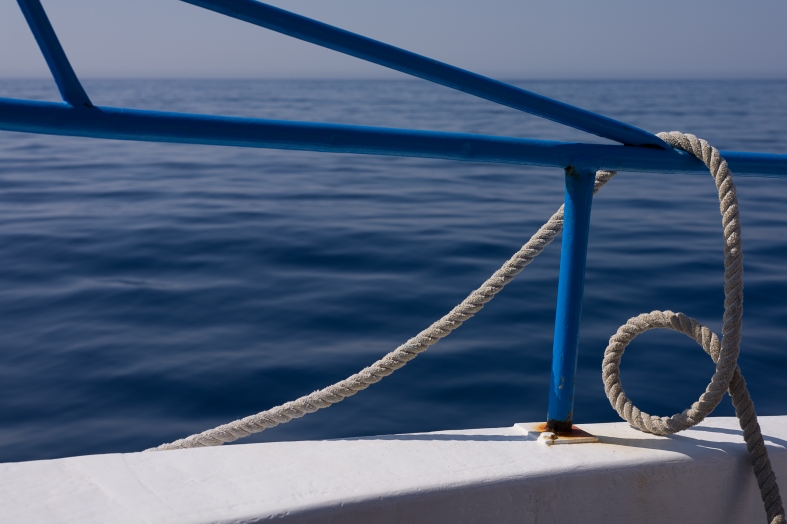
Curlicue Leica SL with Leica APO Summicron M f2 50 ISO 50
Manual Focus
I’ve found it a real pleasure using manual focus with a good quality EVF and that with practice it’s perfectly possible to focus accurately without any assistance aids. I’ve written about this with respect to the Leica T (http://www.slack.co.uk/2014/Leica_T_Manual_Focus.html). Let’s face it, everyone accepts that focusing accurately with a rangefinder requires practice, but somehow they seem to feel that with an EVF it should be second nature. With the improved viewfinder of the SL, manual focus without assistance is even easier.
However, Leica have listened to their customers, and with focus peaking and moveable zoom magnification the SL has all the focus assistance anyone could require. What’s more they have obviously thought very hard about the implementation of this: I particularly like the zoom focus, which by default is on the bottom left hand button on the back – it’s easy to hit with one’s thumb whilst looking through the viewfinder – one touch zooms in to about 3x, the second touch to about 10x, the third touch zooms out again . . . however, if you do the first touch (to 3x) and then wait a few seconds the second touch zooms you out again rather than further in. You can move the zoomed in point around quickly using the joystick. The review mode works the same way, with the bonus that you can also zoom by tapping / double tapping the LCD.
The Electronic Viewfinder
Everyone loved the viewfinder on the Leica Q, with it’s 3.86 million dot EVF. Here Leica have raised the bar even higher with a 4.4 million dot EVF, but much more impressive is the huge size, which is a class leading 0.8 magnification (the EVF on the Sony A7rii is 2.36 million dots and has 0.78 magnification). To put this into context, it’s roughly the same as the legendary Leica R6.2, and the Nikon D810 is only 0.7x. In my prototype camera I would have liked it to be less contrasty, but this should have changed for the production camera.
Suffice to say the viewfinder is extremely large and great to use.
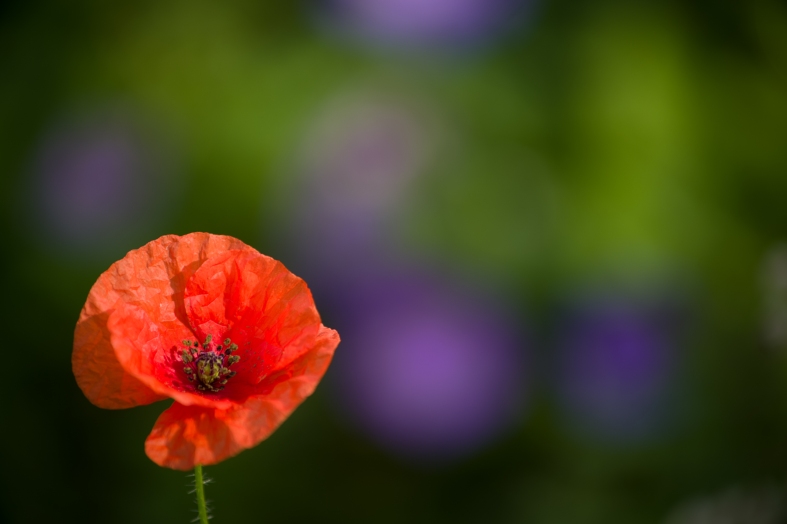
Poppy and Purple Leica SL with Leica Vario Elmar R f4 80-200 ISO 50
Responsiveness and the shutter
With the Q it seemed that Leica had suddenly solved all their speed and responsiveness issues. No more viewfinder blackout, no waiting for files to write to disk. If anything the SL is even faster, the startup speed is really impressive (only slowed down slightly if you have full SD cards). Like the Q, there is no significant viewfinder blackout, and the latency seems to be very slight, even in fairly poor light.
The combination of quick AF and the excellent EVF, the large buffer and the quick shot to shot times makes this camera quite competitive with one of the professional level dSLR cameras from Canon or Nikon.
Interestingly, and rather against the trend, the SL does not have an electronic shutter like the Leica Q or the Sony A7 cameras. However, useful as the electronic shutter undoubtedly is, it is usually used either for shooting quietly, reducing shutter shock, or else shooting in very bright conditions.
The shutter of the SL is really really quiet – deliciously so, and with the mass of the body, I don’t think that shutter shock could ever be a problem (certainly I’ve found no evidence of it), in terms of stealth, the camera is quiet enough to shoot in any conditions without disturbing the subject.
The Leica SL has a functional base of 50 ISO and a top shutter speed of 1/8000th. to put this into context with respect to the Leica M (200 ISO and 1/4000th) you have 3 extra stops of leeway in bright light. In comparison with the Q you have a one stop advantage. This is all without reverting to the use of an electronic shutter.
It’s worth noting that the actual Sensor base ISO is 100, but Leica claim that there is no discernible fall off in quality at the (theoretically) ‘pulled’ 50 ISO. I’ve tested this thoroughly, and I certainly couldn’t identify any reduction of dynamic range at 50 ISO
The disadvantage of an electronic shutter is the possibility of rolling shutter effects, especially in artificial lighting where there is a likelihood of banding, but also in other situations where there is fast movement. The SL avoids these potential problems but still produces the benefit of almost silent shooting and the ability to shoot in very bright light.
The other real pleasure of the low base ISO and the fast shutter was the ability to use Leica M lenses wide open in bright lighting conditions. In fact, during our recent trip to Crete, I didn’t find any situations where I wanted to use a wide aperture and where the sunshine made the exposure impossible. ND filters relegated to the camera closet!

Predator Leica SL with Leica Vario Elmarit f2.8-f4 24-90 ISO 200
Image Quality
If you actually need 40Mp for your work, then clearly the 24mp of the Leica SL is not going to be enough. Personally, I feel that until there is a quantum leap in computer power, then 24mp is just about the sweet spot for a modern digital camera. There is a move in the industry towards larger and larger numbers, and whilst I sympathise in terms of ‘sampling’, I also feel that you can produce as big a print as you like with 24mp (for normal viewing distances).
The sensor in the Leica SL is a sibling of the much praised sensor in the Leica Q, and as you would expect, the image quality is at least equivalent. The colour is great, and the lack of an AA filter provides the maximum detail from the sensor. The high ISO is excellent.
The DNG files are fully supported by the current Apple software (including Aperture, Photos and the OS X core processes), but of course they will be optimised for use in Adobe Lightroom. I’ve mostly been using Lightroom, and I’ve found the files to be excellent, and they allow a lot of post processing before showing signs of falling apart.
The dynamic range seems to be fine; with it being possible to extract seemingly endless detail from the shadow areas. The highlights are not too prone to clipping. Altogether a great performance, and worthy of Leica.
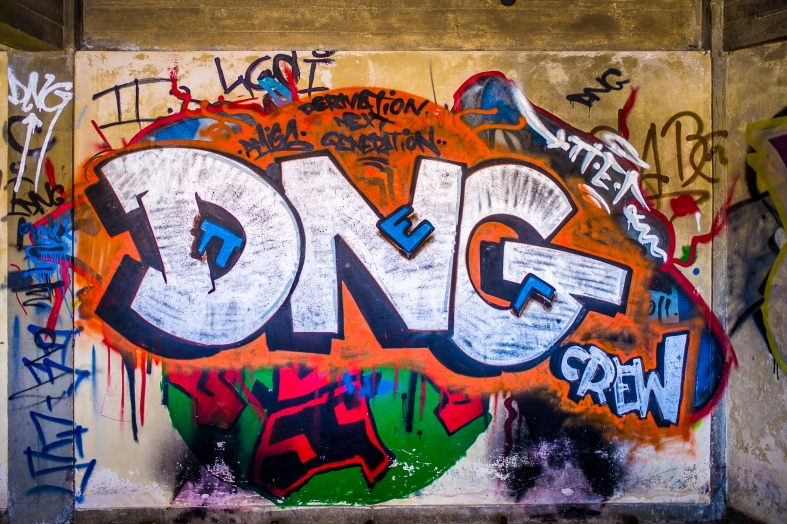
DNG Leica SL with Leica Summilux M Asph f1.4 28mm ISO 50
The 24-90 f2.8-f4 Vario Elmar
Three lenses are to be announced at the launch of the camera:
Leica Vario-Elmarit SL 1:2.8-4 / 24-90 Aspherical
Leica Apo-Vario-Elmarit SL 1:2.8-4 / 90-280mm
Leica Summilux SL 1:1.4 / 50mm Aspherical
In Addition there will be two new TL mount (T mount APSc) lenses announced (to be available later)
Leica Summilux Asph 35mm f1.4 (equivalent 50mm in full frame)
Leica Elmarit 60mm macro (equivalent to 90mm in full frame).
This is a really interesting and welcome development – not so much with relationship to the SL (although they’ll be fast AF lenses when one doesn’t need full resolution) but more because it shows Leica’s obvious continuous commitment to the development of the Leica T. I still love that little camera!
Only the 24-90 will be ship with the camera, and this is the only lens I’ve had the opportunity to test. The trio seems to me to be a sensible starting point for a new system, with a full zoom range from 24-280 and a high quality fast prime lens. I’m sure it’s just the beginning of a much larger system, and in the meantime there is a wealth of M, R, T and S lenses which can be used with the camera – indeed, it’s perfectly possible to use the camera with any lens for which there is an existing M adapter by the simple device of stacking a T to M adapter with the relevant adapter for the lens (for example the Contax T* lenses). There will also be an adapter for the Leica S lenses providing full auto-focus functionality.
The 24-90 Vario-Elmarit is a large lens, as big as you would expect a fast, high quality zoom for any dSLR system and slightly larger than the Leica R 24-90 Vario Elmarit. It would seem that these lenses don’t come small (witness Sony’s inability to produce small zooms for the A7 cameras). Perhaps this explains why Leica haven’t tried to make the SL smaller, as very small bodies don’t really play well with larger lenses.
As far as quality is concerned, Leica feel that this lens is the best zoom lens they’ve ever produced, the only compromise has been the variable aperture (f2.8-f4) which allows them to maximise the image quality. Certainly, from my experience it’s a really fantastic lens at all apertures and all focal lengths.
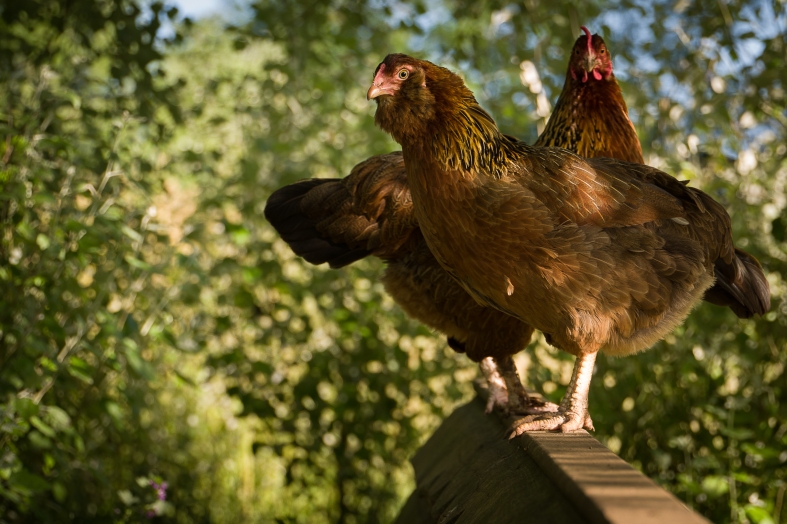
Cam’s Children Leica SL with Leica Vario Elmarit f2.8-f4 24-90 ISO 50
Other Features
GPS
It’s a great feature, but It’s only really useful if it works properly. The GPS on the SL does seem to be both extremely accurate and very fast. Even when switching on and taking an image immediately it seems to get it right most of the time. I’ll talk about this more in field reports later.

Crete Map
Wifi Connectivity
I’m hoping that this will also work well, but I’ve not had an opportunity to test this as the App for IOS was not yet ready.
Video
I understand that the video features are very impressive, but I’m no expert in the field, so I’ll leave that up to others to report on
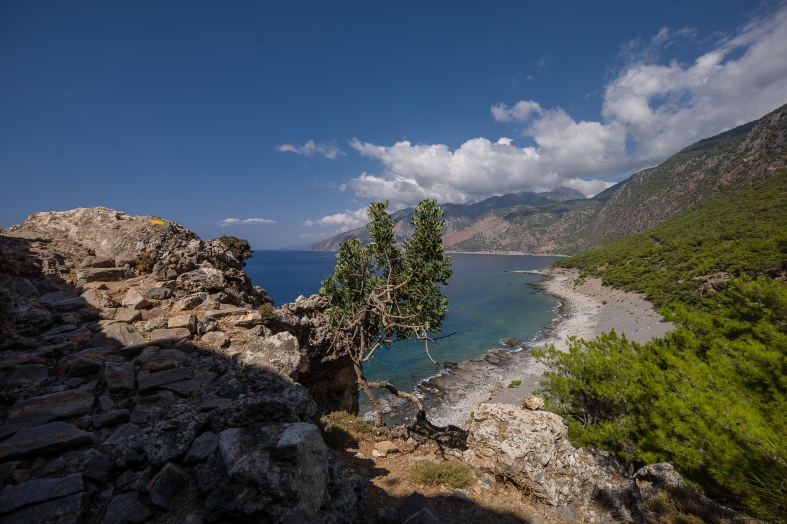
From Agios Pavlos to Agia Roumelli Leica SL with Leica Tri Elmar M f4 16-18-21 at 18mm ISO 50
The Leica SL with Leica T lenses
The SL has a crop mode for use with the existing Leica T lenses. This produces images of around 10.3Mp – not as much as the Leica T, but covering the same APSc area of the sensor (the pixels in the SL are larger than those in the T). There are lots of circumstances where this is sufficient, and of course it provides the possibility of 3 high quality and extremely compact zoom lenses:
Leica Super-Vario-Elmar-T 11-23mm f/3.5-4.5 ASPH (17-35 equivalent)
Leica VARIO-ELMAR-T 18-56mm f3.5-5.6 ASPH (28-85 equivalent)
Leica APO-Vario-Elmar-T 55-135mm f/3.5-4.5 ASPH (80-200 equivalent)
and a fast prime: Leica T Summicron-T 23mm f2 ASPH (35 equivalent)
Also announced are the new 35 Summilux (50 equivalent) and 60mm macro (90mm equivalent)
The good news is that the AutoFocus speed with these lenses is much, much faster than it is with the Leica T (really in another league, and up with the AF of the Leica Q and competitive mirrorless systems). This isn’t just good for the SL, it also means that these lenses are capable of much faster AF with any future T cameras.
I have used the SL with all of these lenses, and they all produce excellent results with fast AF.
The Leica SL with Leica S lenses
The ability to use Leica S lenses with the Leica SL is really important with respect to it’s reception as a complete camera system.
Unfortunately the adapter wasn’t available for me to test (and anyway I don’t personally own any S lenses). I understand that the adapter will support AF for the S lenses. Although they are expensive and rather large, using them on a full frame sensor should make the most of the sweet spot of the lenses, and the image quality really should be incredible.
Of course, the S lenses will behave on full frame at their actual focal length, so that the 70mm summarit will behave as a 70mm lens (whereas it behaves as a 50mm on the Leica S). I must say I’d really like to try the Leica Apo-Macro-Summarit-S 120mm f2.5 on the SL body. I can’t imagine that it’s possible to get better image quality in a macro lens.
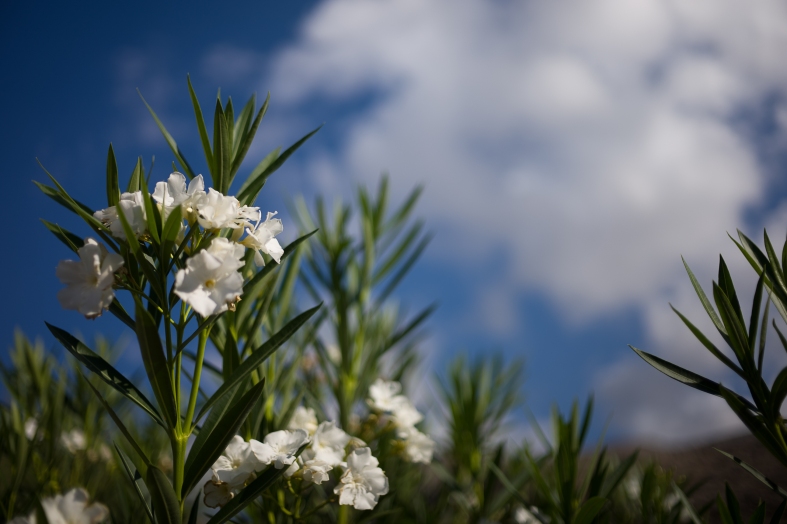
In the Aradhena Gorge Leica SL with Leica Summilux M Asph f1.4 35mm (FLE) ISO 50
The Leica SL with Leica R lenses
There will be a Leica T to R adapter in the near future. However, it was not ready in time for me to test, so I’ve been using R lenses with the Leica T to M adapter and the Leica M to R adapter stacked.
This works remarkably well – I have changed the bottom right button on the rear panel to bring up Lens Profiles. With the stacked adapters, the camera recognises the 6 bit coding on the M to R adapter and brings up a list of R lenses to choose from. Better than this, it remembers the last R lens used, so if you are regularly using the same R lens it will set the profile automatically.
Of course, this has a number of advantages over using R lenses on dSLR or other mirrorless cameras. First of all the fact that the exif information is filled in automatically, but more importantly it means that the focal length of the lens is registered and can be used in the Auto ISO settings to set the maximum exposure time tot 1x or 2x the focal length.
I have spent the last month with the Leica SL without the 24-90 zoom, and so I’ve been shooting exclusively with M, T and R lenses. Specifically the 35-70 f4/macro, the 80-200 f4 and the 60mm f2.8 macro elmarit. Of course, these lenses don’t require any introduction to R users, and they don’t represent the very best available lenses (my wallet doesn’t stretch that far). However, I’ve found them all to be really usable, producing excellent results.
With the large bright EVF of the SL, manual focusing is really easy. Best results are achieved by focusing wide open and stopping down, but this is not nearly as critical as it is on a dSLR camera as the light in the viewfinder gains whilst the aperture reduces. Certainly, I’ve been get a really good focus hit rate even when stopped down to f8.
When the Leica R10 project was abandoned, Leica promised to provide a proper replacement for R lenses, the Leica SL clearly is that replacement, whether intentionally or not. The bottom line is that there is not a better alternative for R lenses than the Leica SL.

BGY (blue green and yellow) Leica SL with Leica Vario Elmar Rf4 35-70 ISO 50
The Leica SL with Leica M lenses
For many photographers using Leica M lenses on a mirrorless camera with an EVF is the holy grail.
Currently the only full frame competitor for the Leica SL is the Sony A7 range of cameras. Whilst these are undoubtedly excellent cameras and they do well with longer focal length M lenses; especially at close to medium distances. Problems do start to occur at longer distances (when the rear element is closer to the sensor) and at shorter focal lengths (where the angle of incidence of light on the sensor is more acute). This causes fairly intense ‘smearing’ at the edges and corner of the frame, worse at wider apertures and wider focal lengths, but in actual fact, the smearing is still visible in the corners at f8 on the 50mm Summilux Asph. This isn’t really a criticism of Sony – why should they design their sensors to work well with rangefinder lenses (which they don’t themselves produce)?
Ron Scheffler has done a series of excellent and diligent comparisons between the Sony cameras and the Leica M cameras in his Tech Talk sub site (http://www.ronscheffler.com/techtalk/). The general consensus seems to be the this smearing is a function of the thickness of the coverglass over the sensor, the thicker the coverglass, the more the problem.
For me then, the $64,000 dollar question was whether the Leica SL would perform well enough with Leica M lenses. To that end I dusted down my tripod and headed to the Suffolk coast with my Leica M240, the Leica SL, and my son Silas’s Sony A7 mark 2, together with a selection of Leica lenses which have proved problematic. I took a leaf out of Sean Reid’s book, and did this properly, shooting at f2.8, f4, f5.6 and f8 with each lens, with focus bracketing for each set. I am intending to post the original files and the comparison between the Sony A7 mark 2 and the Leica SL in a later article, but suffice to say, that although the edges and corners of the M240 were slightly better than the SL, the results for the SL were hugely better than those from the Sony A7 mark 2. Sadly, I didn’t have a Sony A7r mark 2, but the cover glass is the same thickness as that on the A7, and there is no reason to suppose that the results will be any better than the A7 mark 2.
I will be doing a separate article on the comparisons, Sean Reid has been doing detailed comparisons between M lenses on the SL and on the Leica M240, together with thorough testing of Leica R lenses on the Leica SL and several Field Reports. You can read his reports at www.reidreviews.com.
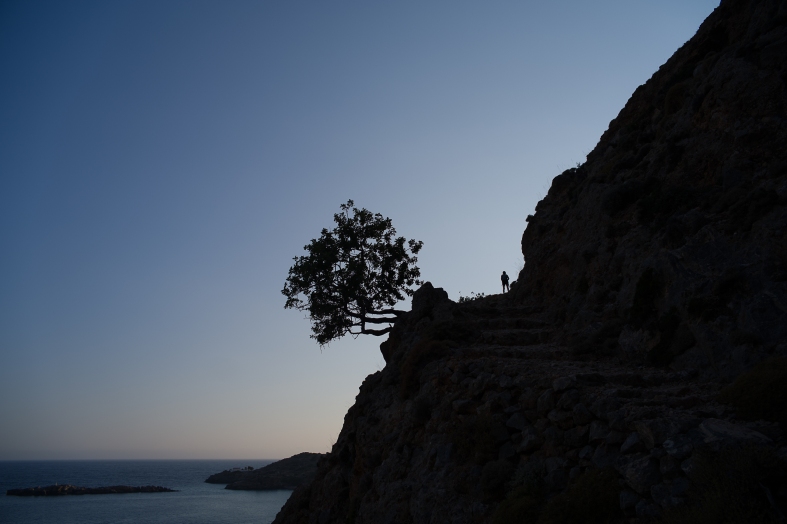
Nearly suppertime Leica SL with Leica Summilux M Asph f1.4 28mm ISO 50
The Leica SL with the T to M adapter reads the 6 bit code automatically and inserts it into the exif, and uses the focal length for automatic ISO calculations. If the lens is uncoded, then you can use the lens profile menu to pick the correct M lens.
Just like the Leica M cameras the SL has in camera profiles for all the modern M lenses so as to correct vignetting and colour cast, these are still being perfected for the final production firmware, but they worked really well for all the lenses I tested. I saw no colour casts, and what vignetting there was caused me no problems – I suspect that Leica have avoided being heavy-handed with this to preserve as much resolution as possible.
I have shot more images with M lenses than with R and T lenses and the 24-90 zoom put together. Favourite lenses have been the Wide Angle Tri Elmar, the 28mm f1.4 Summilux, the 50mm f1.4 Summilux Asph, the 75 APO summicron and the 90mm macro elmar (especially with the Leica Macro Adapter M). Results have been excellent, and compare well with those from My Leica M240.
Whilst with the 24-90 the Leica SL definitely feels like a large camera (perhaps reminiscent of a Nikon D700); with M lenses it feels small and very very solid. The beautifully dampened shutter and the hand grip make it possible to carry one handed all day (and I’ve done this on many occasions). It also feels really great with the larger M lenses, it felt like a perfect match for the 28mm f1.4 summilux, and I guess it would also be wonderful with the Noctilux (sadly I sold mine).
I still think the perfect camera for an M lens is an M camera, but then I’m in love with the rangefinder experience. The SL certainly makes a lovely partner for M lenses.

Sweetwater beach myopia Leica SL with Leica Summilux M Asph f1.4 35mm (FLE) ISO 50
The Leica SL in the Field
Rain and Pink Tractors in the UK
Every year in Suffolk there is a vintage tractor road run for ladies. This is a charity event in aid of Breast Cancer Research, it’s been running for 12 years, and next year they look like passing the £500,000 mark. This year there were around 160 tractors, all decorated in pink, some of the tractors are well over 60 years old.
For the last 4 years I’ve been the official photographer for the event. It’s an interesting challenge, the intention being to catch good images of each of the drivers (and their tractors) at 4 different locations. It takes around 25 minutes for them to pass at each point, they’re travelling quite fast, and sometimes very close together. Any AF system is likely to focus on the front of the tractor rather than the driver, and the english weather usually means that a pretty wide aperture is required. Missing someone is just not an option, and generally speaking you only have a few seconds to focus and shoot each shot, the issue is complicated by the need to get the driver’s attention at the moment you shoot – of course, this means shooting one handed, waving to the drivers with the left hand whilst shooting with he right.
This year it was raining for the first two locations…… not just raining a bit, but pouring down – I didn’t have an assistant, so there was no way of using an umbrella, and there was no cover at any of the shooting locations . . . . . so the SL and the 24-90 just had to get wet, and they did, really seriously wet. But they performed perfectly, no glitches, and the battery was still 1/4 full after 700 shots. I was also pretty wet . . but for the first time since shooting the event I didn’t miss a shot.
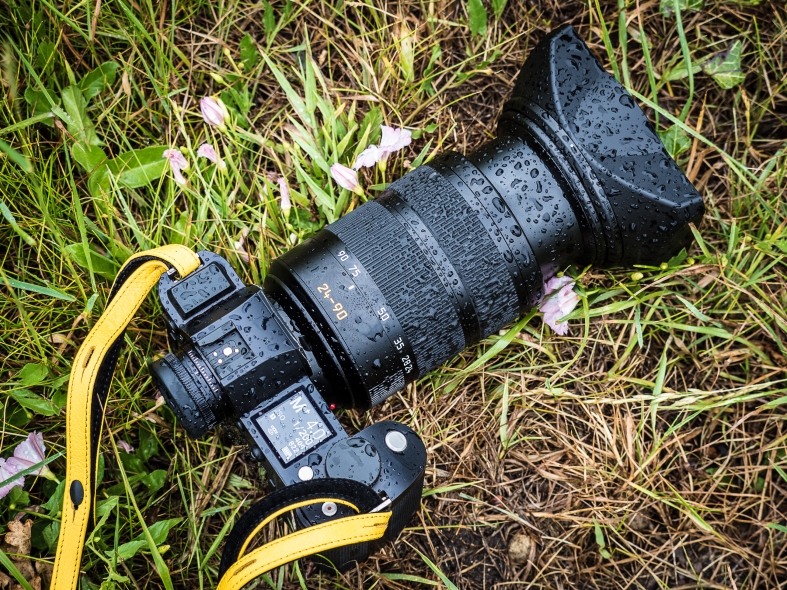
Leica SL in the rain
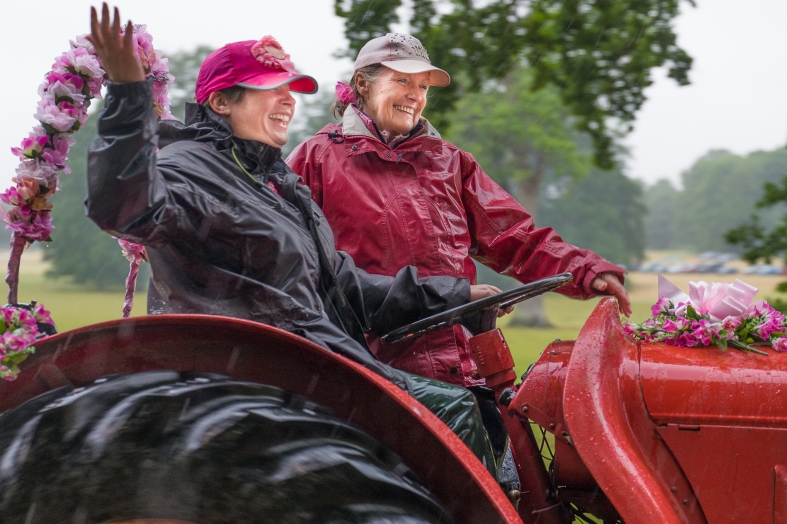
Annie Chapman with Libby Searle on the Pink Ladies tractor run Leica SL with Leica Vario Elmarit f2.8-f4 24-90 ISO 800
Late evening wedding party
In July, just before I was due to return the first prototype, we were asked to a wedding party. The designated photographer left early, so I took over and took images of the party and participants. It was late in the evening, and most of the action was out in the garden – lit only by burning tapers and fireworks; it was very dark! I hadn’t brought the 24-90 with me, and so I made do with the 75 APO summicron and the 50 APO summicron. ISO was mostly between 1600 and 6400 and mostly wide open.
I found focusing to be fine, even in those lighting conditions – there was no time to zoom focus, so it was mostly just at the chosen aperture and focus peaking, but the results were good and the bride and groom were very pleased.
Whilst I’m not certain that the tracking focus is yet good enough to recommend the SL as a sports camera, I’m quite certain that with the 24-90 zoom and a couple of M lenses it would make an excellent and professional solution for a wedding photographer.

Love and Star gazing Leica SL with Leica APO Summicron M Asph f2 50mm ISO 1600
Heat and Dust in South West Crete
My wife and I recharge our batteries and get some late summer sunshine in South West Crete each year. Where we go the White mountains come right down to the Libyan Sea, most of the villages have no roads, so you either have to catch a boat or get there on foot.
We do lots of walking, and take lots of photographs. This year it was extremely hot (high 30s Centigrade), and it’s always very dusty. I like to keep a camera in my hand at all times (it’s just not the same if you have to pull it out of a backpack). This meant that the SL was regularly splashed by seawater, drenched in sweat and then liberally dusted – as usual a couple of my lenses will need to have their paint renewed in Wetzlar.
Once again the Leica SL proved to be a tough and rewarding companion. There were several points where my iPhone refused to work (with a message saying it needed to cool down first) – the camera on the other hand performed flawlessly, the only necessary maintenance was to rinse some salty water out of one of the rear buttons which was beginning to get sticky.

The Leica SL after 3 weeks in Crete (it cleaned up very nicely!
Conclusion
I think that this camera is set to surprise a lot of people, especially those who were anticipating a Leica Q with interchangeable lenses. The truth is that Leica have decided not to produce a direct competitor to the Sony A7, but to build the first really substantial mirrorless camera. The SL has many features normally restricted to the top tier of professional cameras (dual card slots, rigorous weather sealing etc.). It looks and feels like a camera which will survive a real beating – and I’ve done my best to give it as much of a beating as two months allows!

Cameras at dawn (with Emma) Leica SL with Leica Tri Elmar M f4 16-18-21 at 18mm ISO 50
There have been some blurry internet photographs which suggest the body of the SL, but they really don’t do it justice. I think the design team have done a fantastic job with the camera, it feels incredibly well thought out, with all the photographic features that a serious photographer could need, but still keeping to the essentials.
A camera and one lens does not make a system, and it would be naive to think that professional photographers are going to ditch extensive Canon/Nikon/Sony kits to buy into the Leica SL system. But in another sense, if you can manage manual focus, the SL really IS a system, with the huge numbers of M and R lenses properly supported with vignetting and colour cast correction as required. Better than that, If you are already an S user, or if you are willing to buy one or two S primes to go with the Leica SL, they should provide image quality second to none in a full frame camera. It remains to be seen how good the AF is, but the S (typ 007) has proved to me that good autofocus is possible with these lenses.
I would really have liked to have seen in body image stabilisation, but having shot with M and R lenses I’ve found that the size and heft of the body, together with the lovely silky shutter release means that shooting handheld at low shutter speeds is quite easy.
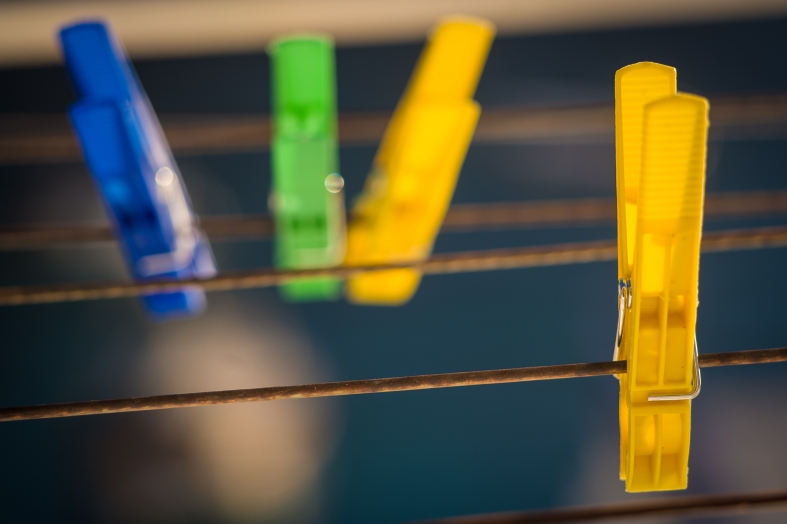
Laundry Music Leica SL with Leica 90mm macro Elmar f4 and the Macro Adapter M ISO 100
There are many thousands of R lenses in regular use (you only have to look at the secondhand prices of some of these lenses to realise how much in demand they are). These days most of the lenses are being used on Canon, Sony and Nikon systems with adapters. The Leica SL really does present a better way to use R lenses, and I can imagine a lot of professionals and experienced amateurs who use R lenses buying an SL body to maximise the potential of their lenses. From that point it’s only a small step to buying a native lens or two, and once tried, the quality of the SL camera and it’s lens is quite addictive.
Personally I just love shooting with it. The rather off-beat looks mellow very quickly, and the camera is, frankly, a delight to use: Responsive and always ready, fully featured, but seemingly with nothing unnecessary. Great image quality and wonderful performance with vintage Leica lenses.
Of course, I have no idea whether the SL will be a success; it’s a bold move from Leica, and it’s giving the rest of the camera industry notice that they plan to be a significant part of the marketplace. What I do know is that I’ll be buying one of the first cameras available.
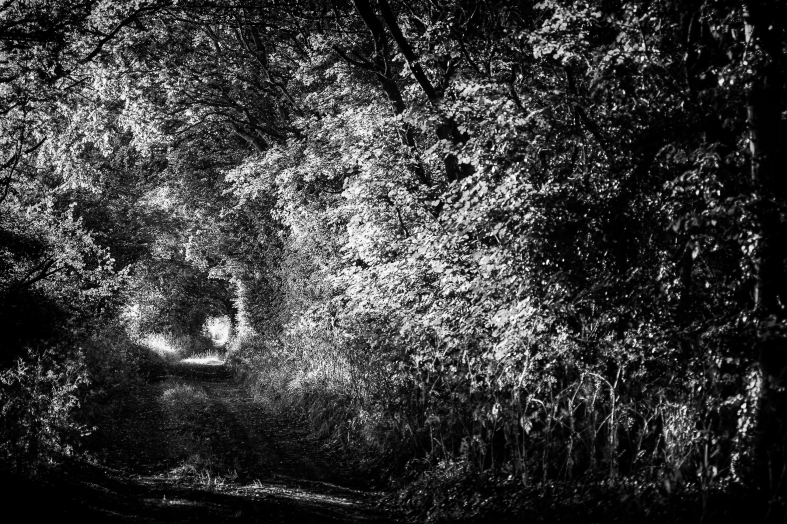
Bier Lane Leica SL with Vario Elmar R f4 35-70 ISO 200
Thanks to
Bill Rosaeur, Stefan Daniel and James Lager for historical / technical information. To Steffen Skopp for his patience in the face of so many questions and to Emma Slack for putting up with so much camera talk.
Thanks also to Sean Reid at Reid reviews for many interesting discussions over the last few months. Sean will be doing a series of detailed articles on the Leica SL with reference both to studio and to field tests. You can read his articles at www.reidreviews.com.
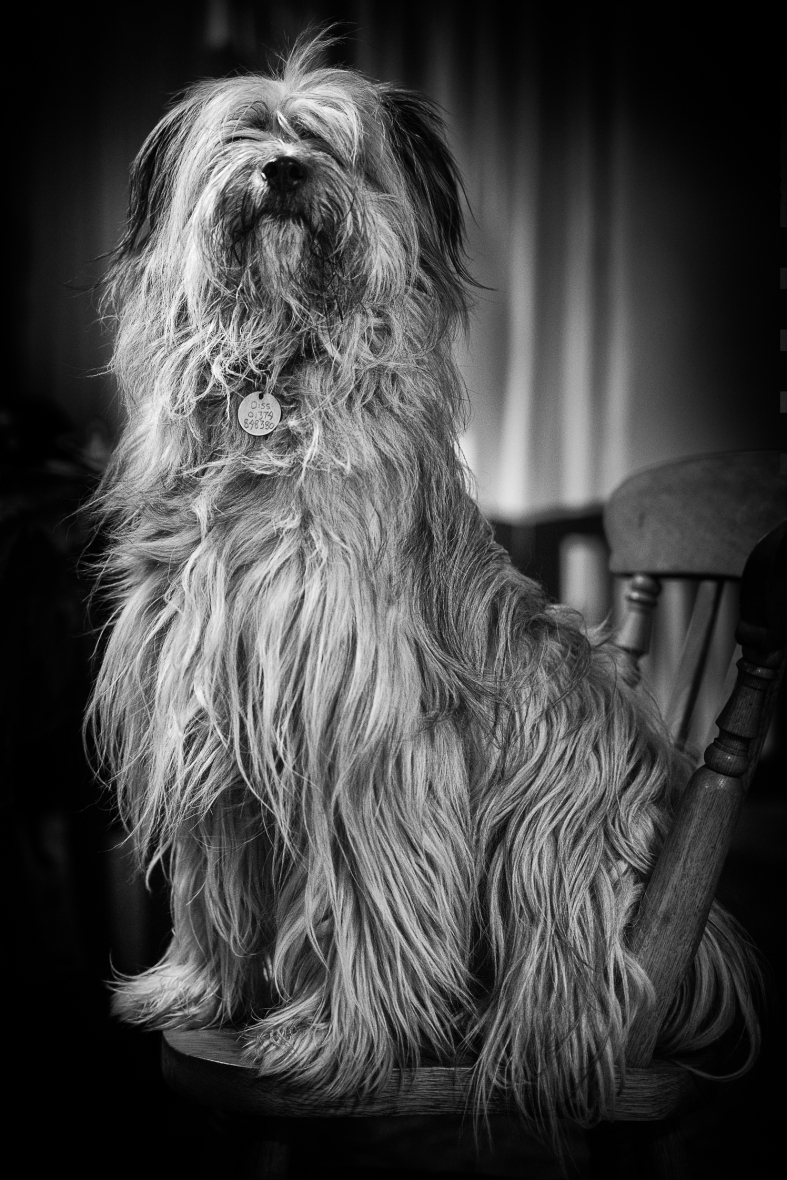
Caspar Imperious Leica SL with Leica APO Summicron M f2 50mm, ISO 1250
About this article
This article is not meant to be a critical review. My loyalty as a camera tester is to Leica. On the other hand I hope that I’m an honest correspondent, and I haven’t said anything that I don’t really believe to be the case or left out anything which I consider to be important. Of course I do carry out some detailed tests, but I generally keep these to myself and Leica. However I spend a lot of time with the camera (in this case around 4,000 images). I try and shoot in as many different circumstances as possible which I hope to have represented well with the images in this report.
Also worth mentioning that I have not been paid by anyone to write this article, and that beyond correcting facts, nobody has had any influence on anything I’ve written – It’s all my own work and there’s nobody else to blame! If you’ve enjoyed reading it, you might like to consider making a donation to your favorite charity.
© Jonathan Slack October 2015


